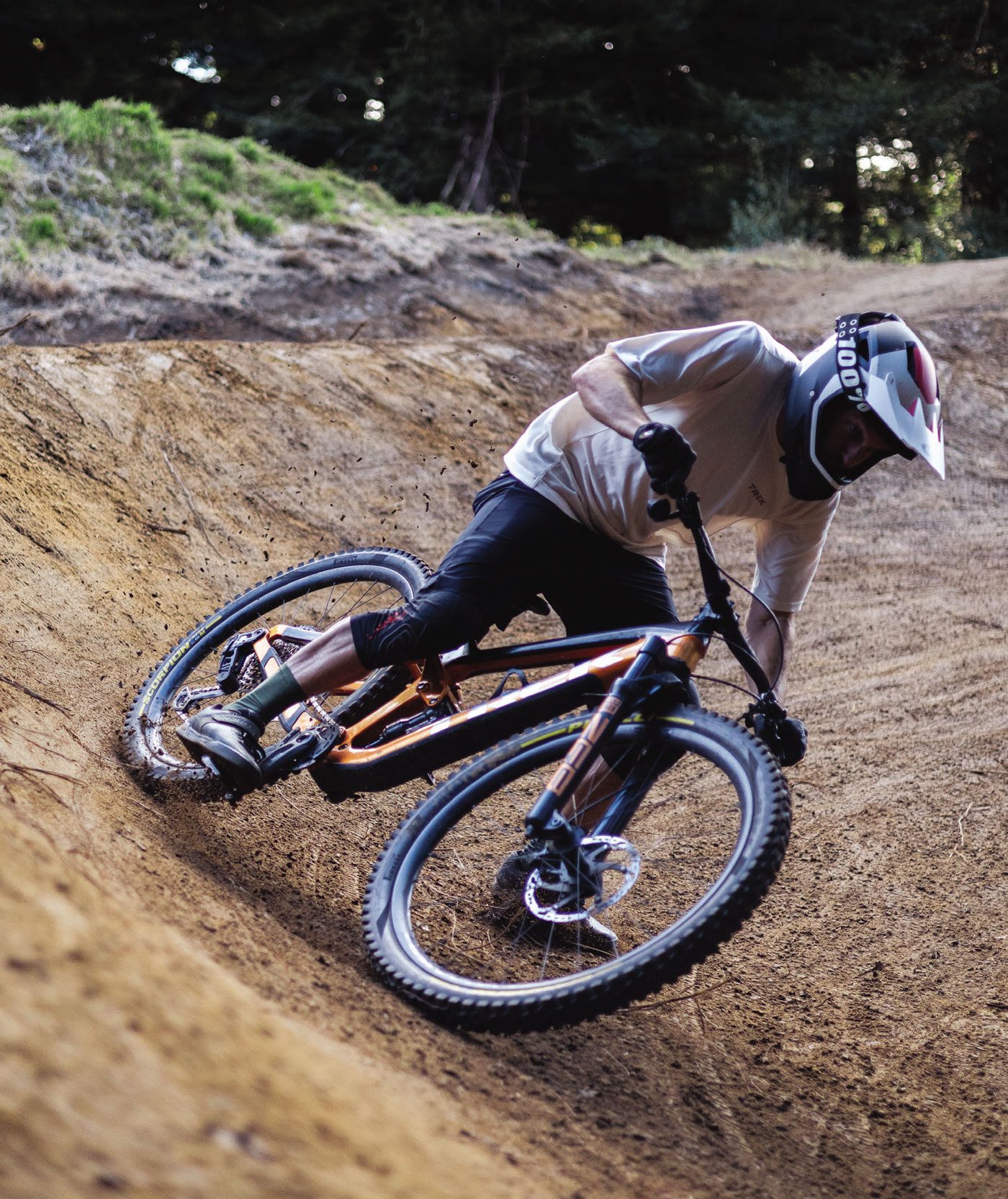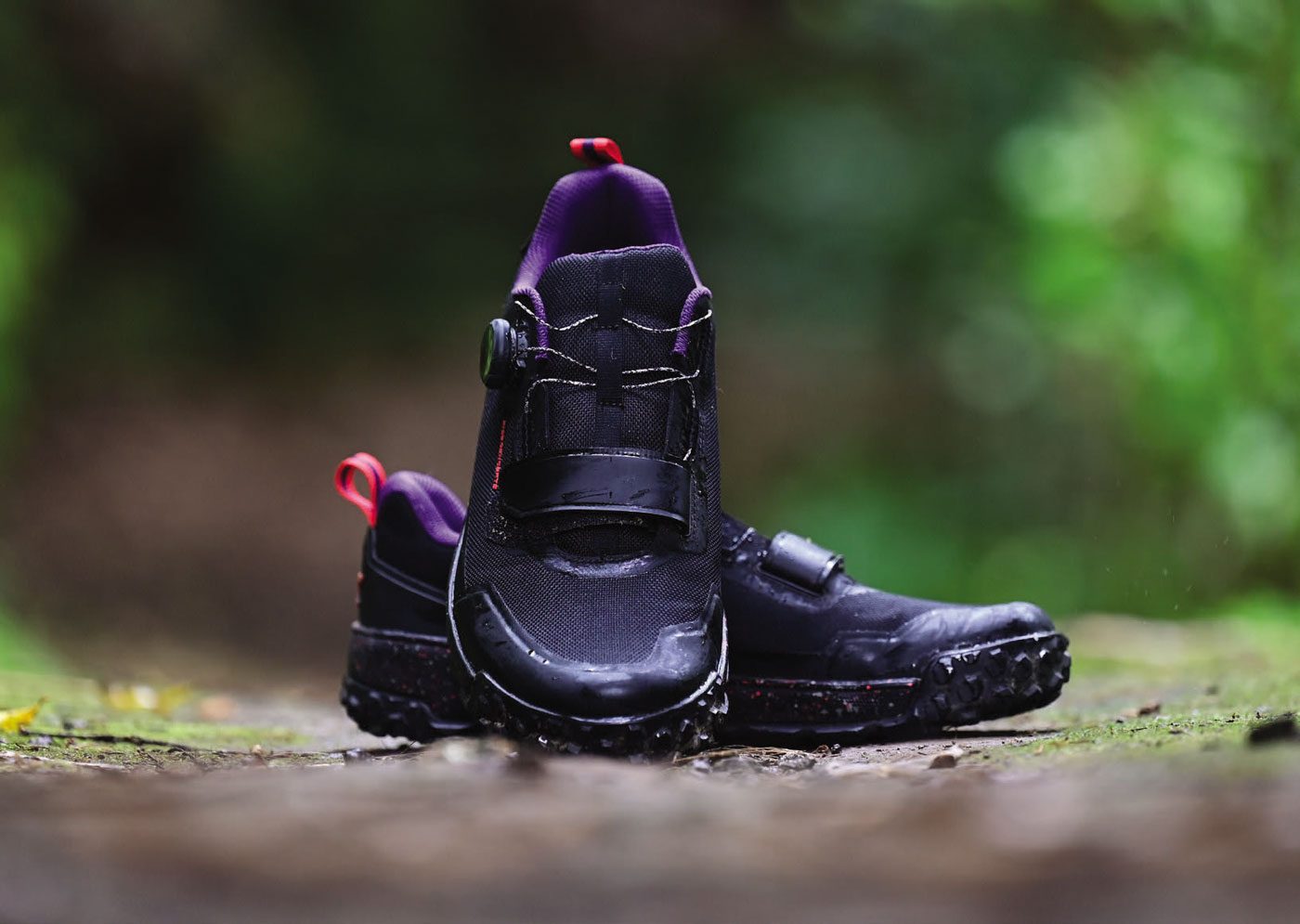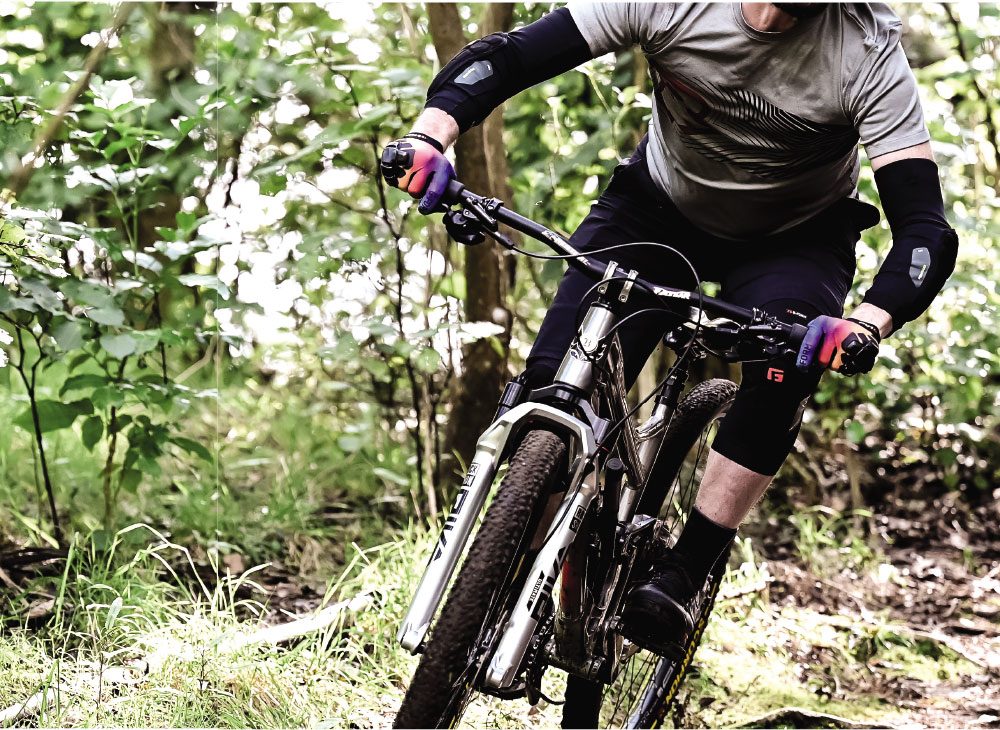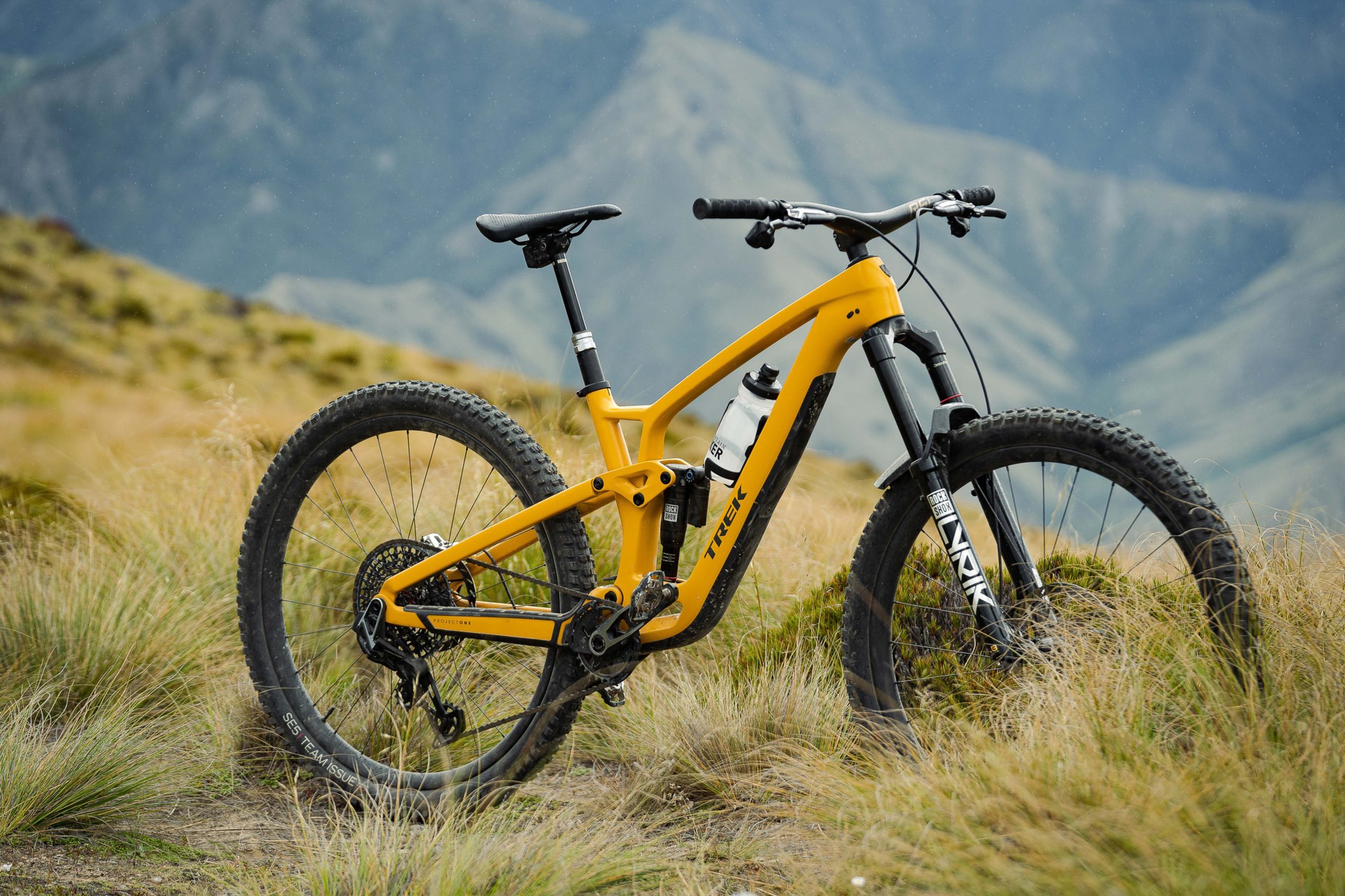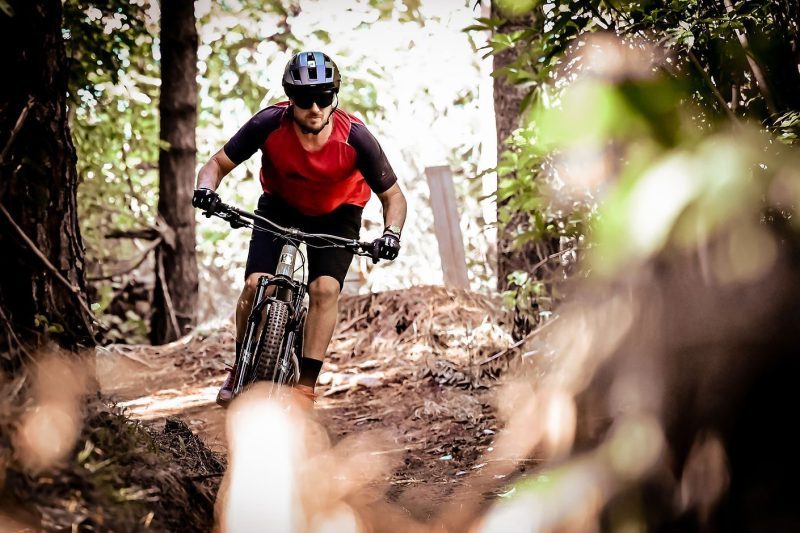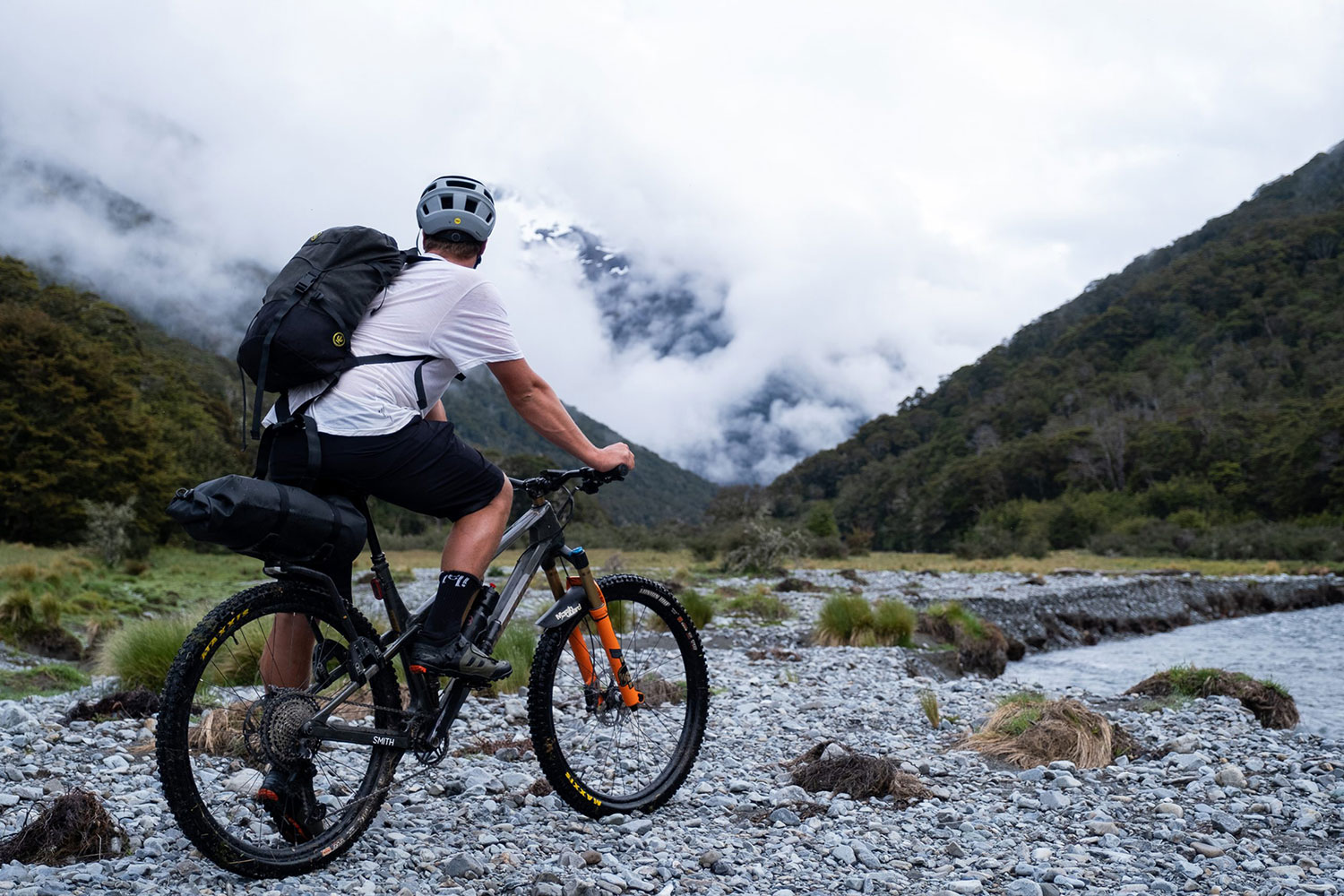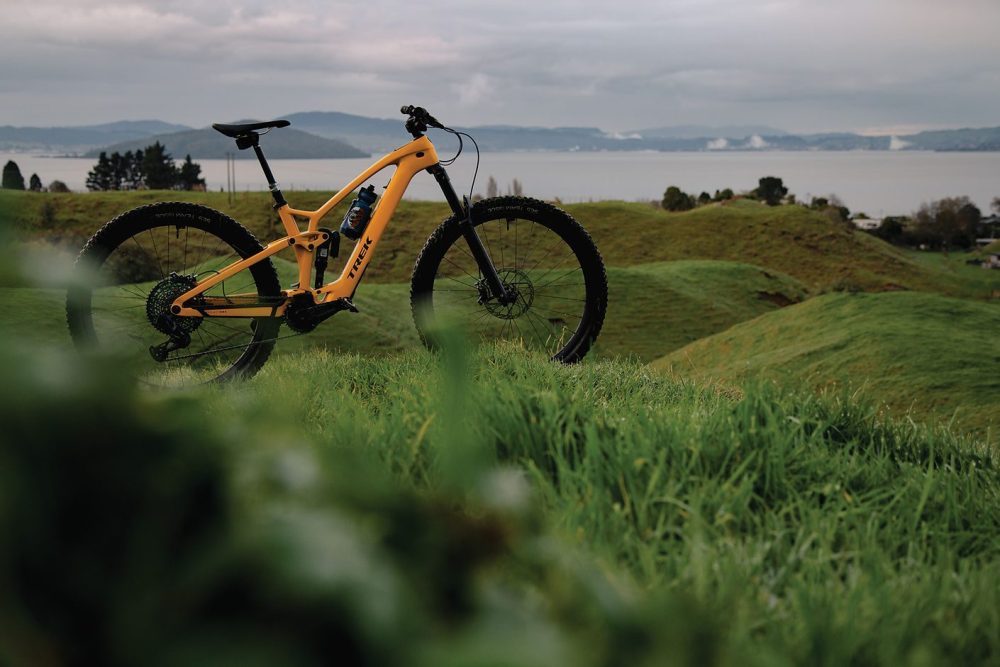Trek Evoke Clothing
WORDS: LESTER PERRY
DISTRIBUTOR: TREK NZ
RRP: $239 (SHORTS), $79 (TECH TEE)
“I reach for the same few pieces of kit each time I’m headed out to the trails; the cream rises to the top…”
Even though I have a fair mountain of riding kit in my cupboard, I’m beginning to realise how little of it I actually regularly use. I reach for the same few pieces each time I’m headed out to the trails. The cream rises to the top and, provided I’ve done my laundry, then it’s unlikely I’ll delve too deep into the pile to use anything other than my unintended favourites. Recently, a new set of kit has made its way into my rotation, though: the Trek Evoke tech tee and the Trek Evoke shorts have become some of my regulars for trail riding.
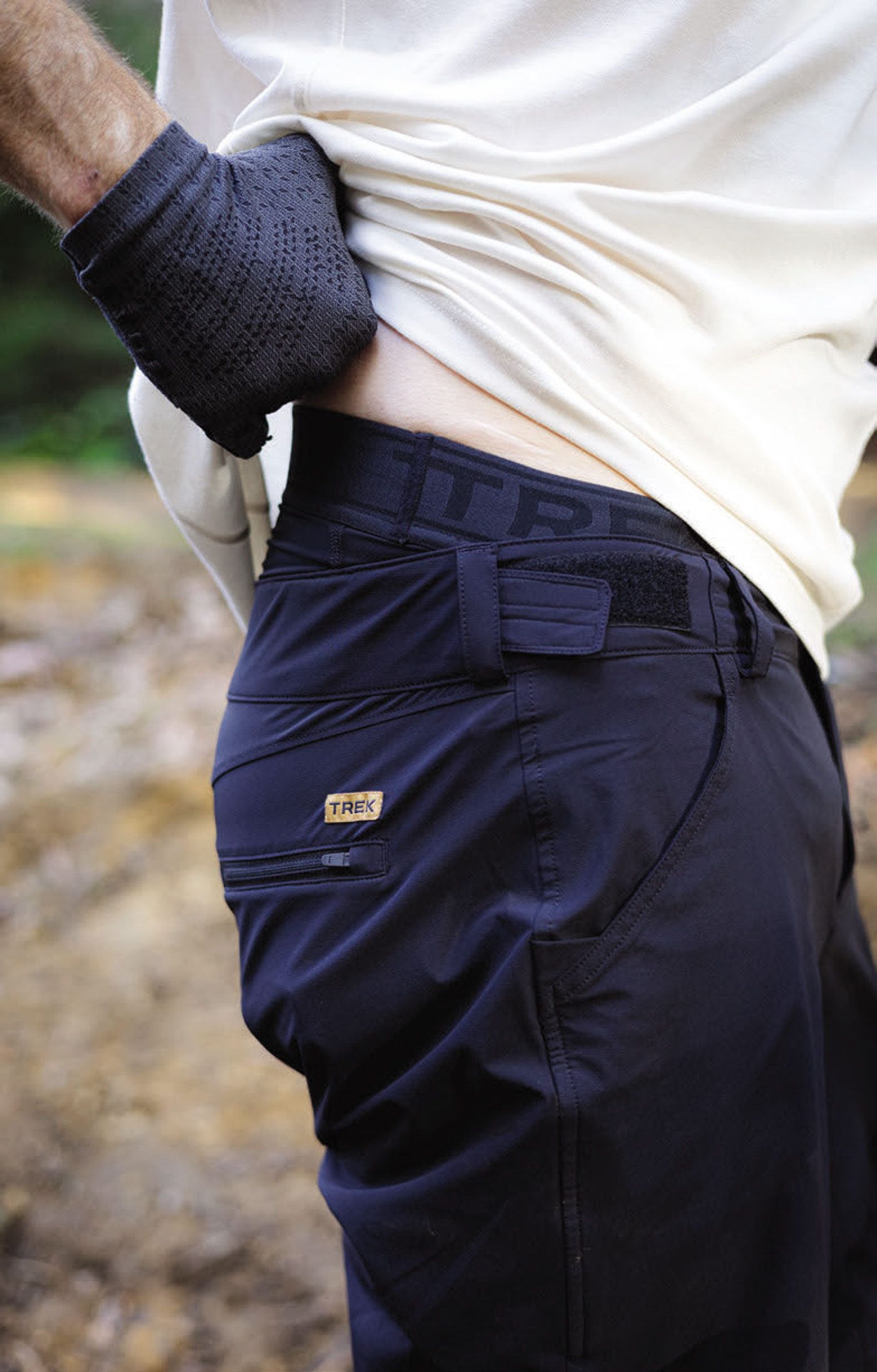
TREK EVOKE SHORTS
Trek has stepped up its game and featured a lightweight two-way stretch material on the outer short, that’s not only made up of 65% recycled materials but tested for harmful substances through the STANDARD 100 by OEKO-TEX® test as well. It’s soft to handle and plush against the skin.
There are two main hip pockets up front and a zippered one on the back – ideal for car keys or small Allen keys, but nothing much more considerable. Up front, a domed closure is paired with a zipper to keep things tidy. I’m a pretty strict 32” waist so went for a Medium. I reckon they’re slightly on the larger side but, with a small adjustment of the Velcro adjusters on each side of the waist, they’re spot on. The fit is listed as ‘semi-fitted’, which seems pretty accurate as they’re reasonably roomy through the leg without being baggy.
The leg length is what will probably be the kicker as to whether you like these shorts or not. I’m slightly below average when it comes to leg length for my 176cm height, and the Evoke’s sit a little above my knees with their 11-inch inseam. In the grand scheme of MTB shorts, this is on the shorter side of things; most shorts sitting in excess of 12 inches. I reckon this length hits the nail on the head for their intended use as a trail short though, ideally sans-knee pads. The overall silhouette is equally at home on a trail ride as at the gym or local swimming spot – they’d even be sweet for a drop-bar gravel ride. With subtle branding – just a small woven label above the rear pocket – they don’t scream “I’m a mountain biker!” at all… which makes a nice change.
Wearing liner undershorts has become normal for many riders these days, and we’re seeing fewer and fewer people hiding bib shorts beneath their baggies. There are a heap of liners on the market these days but, from what I’ve experienced, most fall short and are merely ticking a box rather than offering the ideal solution. The fits are off, chamois are bad and the overall experience leaves me wishing I’d just purchased a good pair of bibs instead – then hidden them under baggies, of course!
Trek has knocked it out of the park with this pair of liners though – I’m impressed. Let’s start at the top and work our way down: the waistband is a wide, soft number – think, a comfy boxer-short style – and there’s no narrow elastic cutting into your stomach as you’re doubled over, chewing your stem whilst grunting up a steep climb. A couple of different recycled nylon and spandex blends on the main panels help the shorts form nicely to your body, with no discernible bunching or rubbing. The legs feature a similar band to the waist, but with rubber grippers on the rear – finally, a liner the legs won’t creep up on – and they’re awesome for holding up knee pads too. The liner can be used snapped into place, attached to the shorts, or worn completely independently – i.e. under another pair of shorts. Not by themselves… although we’re not ones to judge.
All the good features of a liner are easily let down by an inferior chamois but, after lots of saddle time, my undercarriage is happy to report that the chamois lives up to the rest of the short. No dramas here.

TREK EVOKE TECH TEE:
The Evoke Tech Tee’s main body fabric contains 85% recycled polyester blended with cotton, and passes the same OEKO-TEX® tests the shorts do, so no nasties are hiding in the fabrics.
Wearing a size large (normal for me) the semi-fitted cut is plenty comfy and leaves room for movement. I’m impressed that Trek used some panelling down the sides to help shape the form, not just a standard tee-styled cut. The rear has a slightly dropped tail to help avoid a public builders crack.
The fabric feels reasonably lightweight but not to the point I’d be concerned about tearing it any more than other riding shirts. It breathes well and doesn’t hold on to sweat but helps it evaporate off. Although I’ve been riding this off-white colour over the early winter, the mud seems to clean out of it much easier than some shirts I’ve used.
As with the shorts, this top doesn’t stand out from a casually-dressed crowd and, again, subtle branding helps you stay low-key; just a small chest logo hit proves that you are in fact a cyclist.
WRAP-UP
Like most of the Trek kit (or, previously, Bontrager) I’ve used over the years, the quality of both the shorts and the shirt appears to be top-notch. So far, it seems these garments will stand the test of both time and trails. If you’re searching for some versatile trail-riding garb with subtle style, and don’t want a baggier style ‘all-mountain’ look then the Evoke shorts and tech tee will likely be right up your alley.

Ride Concepts Tallac Clip BOA Shoes
WORDS: LANCE PILBROW
DISTRIBUTOR: SOLIS NZ
RRP: $349
“If I was thinking about a ride that might have significant hike-a-bike, these would be worth considering for that alone.”
I’m the kind of guy who swings both ways when it comes to riding clips and flats. To be honest, I’m not really sure which one is my preference; I alternate between them both so much. Last year, I was able to review the RC Shoes Tallac Flat pedal shoe and it quickly became my favourite with its generous padding around the cuff, comfy D30 sole, and general good looks. It just ticked all the boxes and seemed to match my foot just right for all-day comfort.
So, when the new Tallac Clip shoe came along, this seemed like a home run. Same shoe, just in clip form. Right? Well, actually, no. But we’ll get to that later.
The Tallac Clip I received is the BOA version – yep, it’s got one of those twisty dials that magically does up the laces and, with a flick and a click, it pops up and everything releases. I’ve had a few of these and, aside from looking a little more space-age than lace-ups, I’ve had no problem with them. In fact, I’ve found them incredibly reliable. I really like how I can make micro-adjustments to the tension as I’m riding along. The low-friction textile TX4 BOA laces look perilously thin, but are in fact ultra tough. I’ve never had an issue with the system across a few different shoes. The Tallac has an additional Velcro strap across the lower part of the shoe as well. To be honest, I’m not really sure what the point of this is. I’d prefer the BOA laces just to go a bit further down. The shoes are quite stiff at this point, so I never really found that the Velcro strap was achieving much and, even with it undone, I didn’t feel like I lacked tension across that part of the shoe. Up top, the stealth black outer and purple inner looks great. The uppers are made from Cordura and have a nice woven look that is also durable, and has kept looking great after lots of riding. Internally, they are nicely padded – something I am particular about. I always like a shoe to feel like there is a bit more padding going on than not enough; I find that it really helps with comfort over long rides, and prevents rubbing and hot-points developing. That often comes at a small weight penalty, but it’s one I’m happy to pay. With all that said, I really liked the level of cushioning throughout the shoe and around the ankle collar area. Inside, they also have D30 technology in the insoles, which are designed to absorb impact and reduce fatigue. I really liked this feature on the flat version, so I was stoked to see it here too. On the scales they weighed in at 525gm per side.

Despite their casual looks, these shoes are stiff. On RC’s in-house stiffness scale they describe the Tallac Clip as “Level 5 Flex, found only on our Clipless offerings, is very stiff – designed for ultimate power transfer and support for hard-charging riders”. By comparison, the flat version I also tested is on their scale at Level 4. That all seemed a bit strange to me, as the flat version is a lot more flexible. On my own personal scale; if my running shoes are a 1, and carbon XC race shoes are a 5, I would rank the Tallac flats around a 2.5, and these Tallac Clips about a 4.5. All that is to say that the clip and flat version are totalling different beasts despite sharing the same name and aesthetics. More on that soon.
Underneath, these Tallac Clip’s also have a totally different tread pattern to the Tallac lace version. These are chunky – really chunky – massive hexagonal lugs cover the main portion of the sole with smaller notched hexagons on the toe and heel. It’s clear these shoes are designed to get plenty of grip if you ever have to walk in them. The midsole appears to be a similar thickness to the Tallac flat, and that is something I really liked about the flat version – it felt like a substantial and secure shoe that was a really good platform for walking around on. And yes, this proved true; walking up some greasy, wet clay uphills I was impressed with the great traction they provided. If I was thinking about a ride that might have significant hike-a-bike, these would be worth considering for that alone. I also liked the way the toe grip extended up around the front toe box, providing additional impact protection and durability to a part of the shoe that can get a bit of a battering. The toe box is super solid and offers a high level of protection.
But all that chunky grip did have a drawback. Most notable was that with my Shimano cleat in my preferred most rearward position, in the slotted cleat bed, I simply couldn’t clip into my XTR trail pedals. I can only assume the tread was simply too thick and was preventing the right amount of cleat sitting proud enough to engage the pedal mechanism. I experimented with sliding it incrementally forward, but it wasn’t until it was more or less in the middle position of the slot that I was able to get easy and consistent ‘clipping in’. This was pretty frustrating, and seems like a massive oversight as most people I know prefer to run their cleats in the rearward position – certainly the enduro-gravity oriented crowd that I think these shoes are aimed at. (NB: After googling this, I see Shimano do in fact sell cleat spacers to raise the profile of your cleat – something I’ve never needed before, and never even knew existed, but would perhaps solve the problem?)
Sadly though, as much as I wanted to love these shoes, as good as they felt on, and as much as I loved the BOA system, and as much as I loved the look, for some reason they just didn’t agree with my feet. About half an hour into a ride, the widest part of my left foot would consistently suffer pain and numbness. This was surprising as it didn’t happen with the flat version, so maybe there is something about the stiffness of these clip versions that is just ‘too much’ for my feet? Or maybe there is something about not being able to get the cleat to work in the most rearward position? I’m not sure. After the first ride I thought, ‘hmm, I’m sure this will solve itself once I’ve broken them in a bit more and they have moulded to my feet a bit more’, but even after 20-odd rides it was still the same. Possibly the Level 5 stiffness means they just won’t form to my feet that much. In the end – and to quote bad relationship break-up lines – it was a ‘it’s not you, it’s me’ kind of deal with the RC Tallac Clip. Maybe they are just fractionally narrow for me? Maybe I’ve got a weird issue with my left foot that I wasn’t aware of? Maybe I’ve discovered something and need to see a podiatrist? RC do describe these as a mid-volume shoe on their website and say you may want to consider sizing up half a size. I didn’t get the chance to do that, which would be interesting, but I’d also be nervous to feel too loose in the rest of the shoe as I really like the general fit at my normal EU44 size. I still really like the shoe in principle; I like it enough to persist with it for a bit longer – even after this review goes to print – in the hope that it does in fact mould to my foot just that little bit more. It’s clearly a high-end shoe made with premium materials, which means I would expect it to be extremely durable over the long term and I think it will be a winner for lots of people, so it’s still worth checking out. But, I would also say, if you’re just on the fence about which size to go for, going up might be the right call.
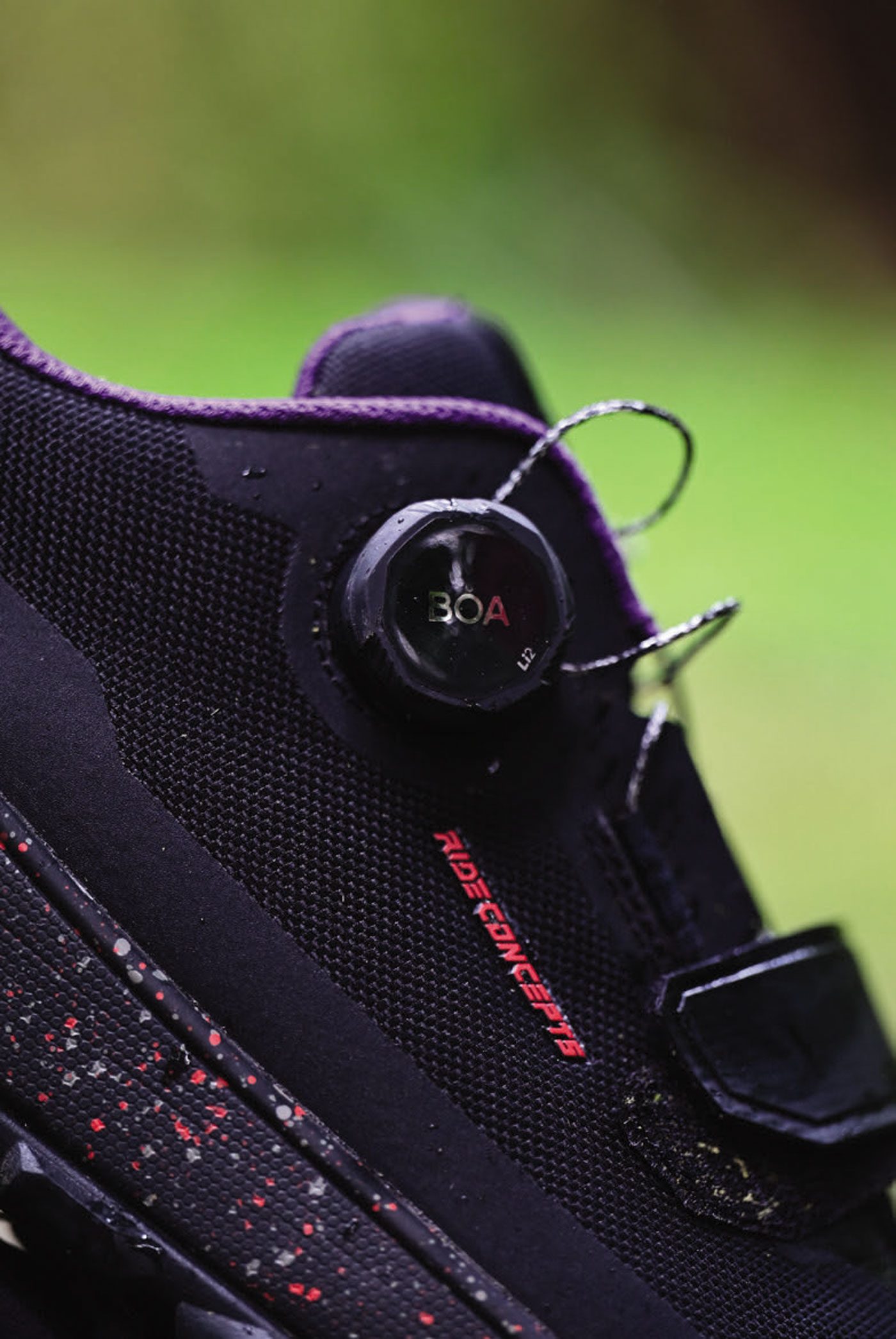

Product Review: G-Form Protection
“I’m really not sure if you could make a knee pad comfier than these. I actually forgot I had them on while writing this review…”
G-Form has built a solid reputation for comfortable protection over the years. I’ve owned previous versions of their elbow and knee pads, and I’ve used them for enduro racing when I’ve specifically been looking for something that is minimal enough to pedal in it all day, but enough to take the worst out of any impact. The last set of G-Form pads worked just perfectly at this, but they were on the minimal side of protection, so I was interested to see their latest ‘Pro Rugged’ series release as it seems to take things up just a notch. All of the new Pro Rugged range use their Smart Flex product on the impact zones; a soft, slightly putty-ish-feeling pad that gets significantly harder on impact. The technical term is ‘viscoelastic’; it’s a cool bit of tech that means when you are just pedalling along, the padding has a more natural ability to flex and move with your body’s natural movement, but still offers the impact protection that you bought the things for. It’s also designed to actually absorb impact and transfer less of this onto the rider.
On both the knee and elbow pads, the SmartFlex zones are covered in Armor-Tex, a tear-resistant fibreglass reinforced material. It’s got a rugged feel to it, and importantly, makes the pads look a little more matte, a little more subtle and, to be honest, a little less alien-like than previous versions which had a bit more sheen to them.
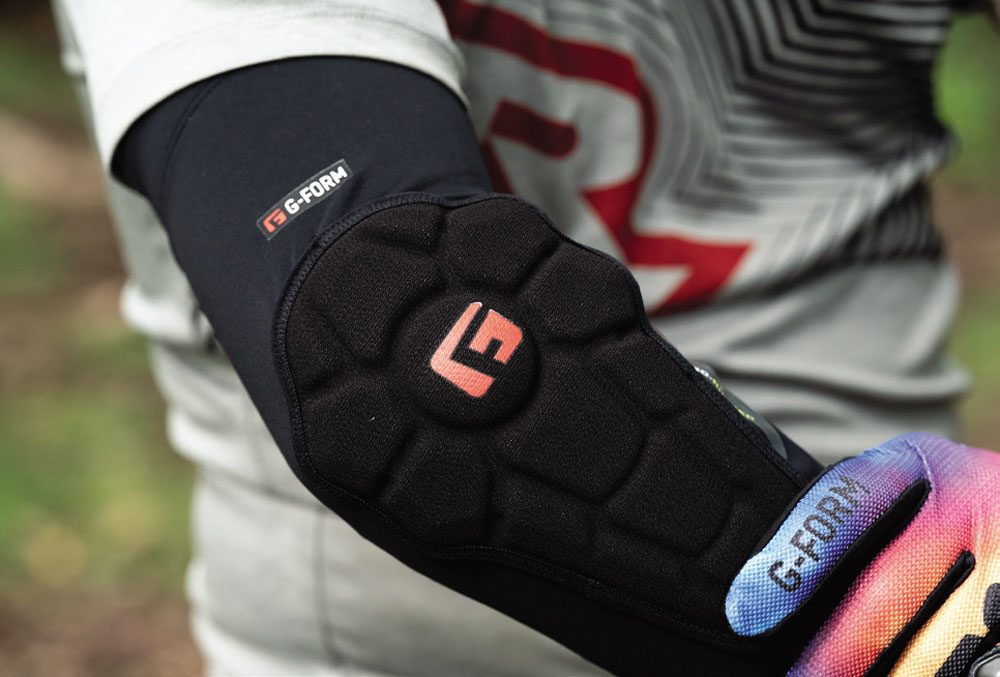
The G-Form Pro Rugged knee pad is similar to what I owned earlier, it’s a Lycra-style sleeve with SmartFlex around the knee. On this version, it is all a little thicker than previous G-Form pads I’ve owned but the idea is the same. The Lycra sleeve material is also different to my previous pair, this feels like it’s both thicker and softer too. They have also added a compression quality to the sleeve material which helps with the goal of keeping them in place. Putting them on, I was once again impressed with how comfortable these pads are to wear. They really do fit like a glove (their gloves fit great too, as you’ll read later) and they don’t have any noticeable itchy spots from Velcro or material bunching. I’m really not sure if you could make a knee pad comfier than these. I actually forgot I had them on while I was wearing them, writing the review! There is an upper Velcro thigh strap to tighten if you need it, but the silicone strip around the top and the bottom, combined with the natural stretch and compression of the sleeve, mean that they stayed in place perfectly, so I never really needed any tension on the Velcro.
The pads are left and right specific, with the SmartFlex zone angling outwards as it moves down your shin, which puts it in a better position to protect against scrapes that would probably come from the outside of your leg. In terms of protection, they really are all about the knee; they don’t offer anything in terms of impact protection outside this zone. These are going to really appeal to enduro riders and those looking for something they can ride all day in, comfortably.
The elbow pads are, well, like the knee pads but smaller! The Pro Rugged elbow pads pack all the same ideas into a slimmer, elbow-friendly package. Same SmartFlex padding covering your elbow but extending a little further down to cover your forearm as well.
We also had the Sorata gloves on review at the same time. These apply the same SmartFlex material found in the knee and elbow pads, but minimally, to the outer edge – just that spot where you are most likely to smash into a tree on that corner you misjudged. We had the Tie-dye colour way, but they are also available in black, blue and green/ grey. Apart from where the obvious armouring is, they are a lightweight, slim fitting glove that feels great. Though you can definitely feel the armouring on the outside of your hand when you are wearing them, they strike a nice balance between offering just a bit of protection in the most likely impact zone, without going so far as to feel like you are wearing a cricket glove. There is no Velcro closure which is a personal preference thing, but I found they had plenty of stretch around the cuff, they went on and off easily, and the cuff band felt great – a little wider than other gloves I’ve had in the past.
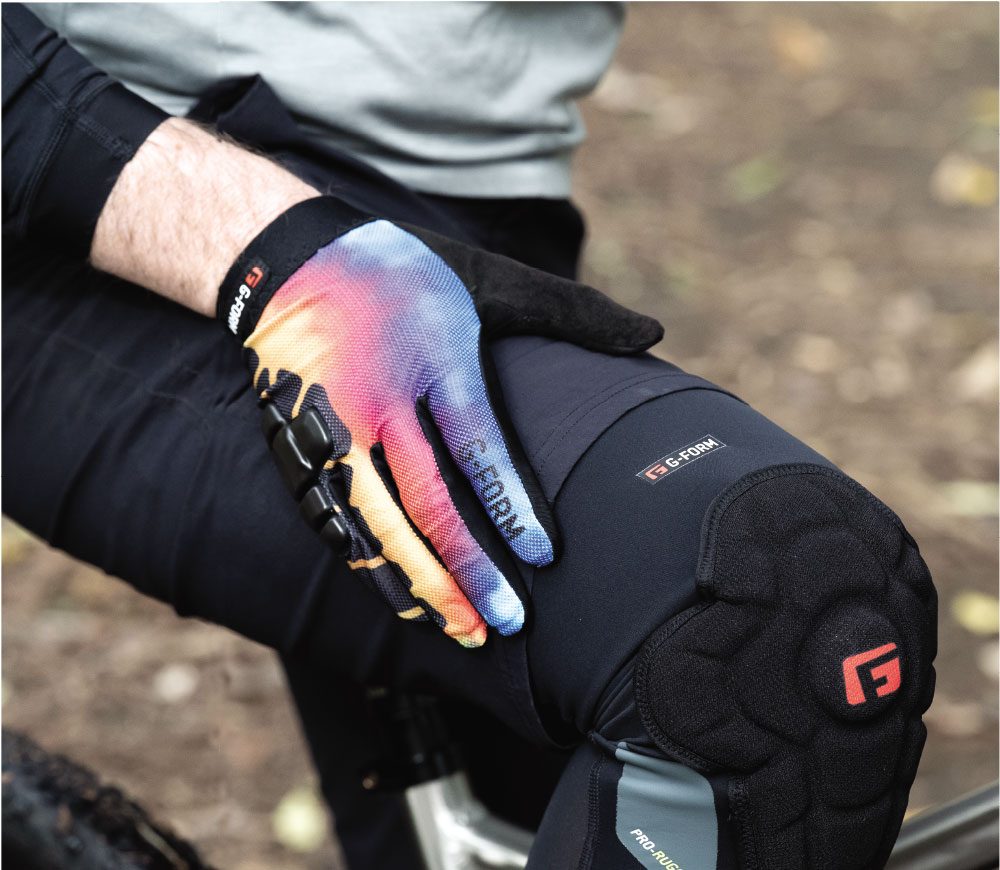
Out on the trail with the whole kit on I was really impressed with how comfortable everything felt. Other knee pads I’ve owned either seem to slip down or need to be tightened up so much it feels like I’m losing blood supply. These felt great. What is more, even after longer rides I didn’t feel like I had discovered the chafe and rub that some pads give. A big part of this, I think, is down to whatever they have done to improve the sleeve material and make it feel less Lycra-y, and a bit more like a nice pair of my wife’s yoga pants. Trust me, it’s comfy stuff, and it stops the areas underneath the armour zones rubbing against your skin. I’d happily wear these for an all-day enduro where I knew I would have to be putting in some serious pedalling throughout the day. The same went for the elbow pads and the gloves – no news is good news! When you don’t have much to complain about, there is sometimes not too much else to say. It does what it says on the tin! They weren’t too hot, the fit was spot on, and they stayed nice and comfortable all day long. Is there much more we’re looking for in our gear? Highly recommended.
REVIEW: LANCE PILBROW
DISTRIBUTOR: EVEROUTDOOR
RRP: SORATA GLOVES $59
RRP: PRO RUGGED KNEE PADS $149
RRP: PRO RUGGED ELBOW PADS: $139
First Impressions: RockShox Pike
“We have been lucky enough to get our hands on the brand spanking 140mm Pike Ultimate and will be putting it through its paces throughout the year.”
Earlier this year, RockShox rolled out a major update of their range with an all-new Zeb, Lyrik and Pike, not to mention a bevy of new rear shocks. We have been lucky enough to get our hands on the brand spanking 140mm Pike Ultimate and will be putting it through its paces throughout the year. First though, the Pike was already a fantastic fork, so what have the SRAM engineers been tinkering with to make it even better?
For starters, one look at it and you can tell this is more than just tinkering, this is an all-new fork. The chassis and arch, in particular, look markedly different to earlier models, but the changes are worked throughout; starting from a blank canvas has meant that engineers have been able to make a unified approach to integrating all the best new ideas they had at one time. On the outside, you’ll see a new crown, upper tubes and lower legs and pressure relief valves on the rear, but the insides are all new too.

Previous Pikes spanned a wide travel range, but this has now been narrowed down to focus specifically on the 120-140mm travel range —smack bang in the middle of what SRAM see as the trail bike market. If you want more travel, you’ll have to go for the Lyrik; less travel, you’ll be on the Sid. This tighter range of travel means that SRAM engineers have been able to narrow the parameters of what they are working with and therefore optimise around that. The result, lower weight in some areas, and better torsional rigidity, meaning they are less likely to twist under braking load and navigating off camber terrain. Forks that don’t twist are free to move through their travel, so that rigidity creates a consistent, supple fork, even under the toughest conditions.
The new Charger 3 damper has been designed from the ground up and features a new spring backed, IFP cartridge damper. Fully sealed and self-contained, this new damper is designed to offer riders a much more consistent feel throughout the stroke, and an increased ability for riders to easily tune the ride to suit their riding style and preferences. The result? Totally independent High-Speed Compression (HSC) and Low Speed Compression (LSC) adjustments, and no “cross-talk” between the two.
On top, you’ll find new adjusters with a new twin dial layout, also with handy visual indicators so you can see at a glance where you are on the adjustment scale. They feature noticeably clearer indents between each setting too. Inside the forks, the bushing design is brand new too — these feature longer bushings now, which actually reduce the overall friction in the system.
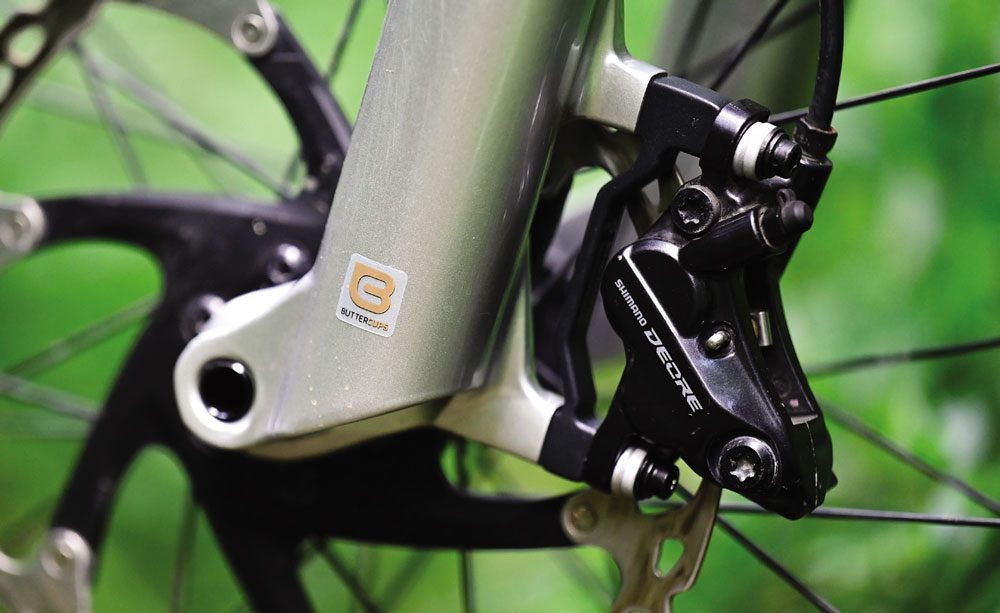
On the other side is the new Debonair+ air spring, again, tailored to the specific needs of a fork in the 120-140mm range. The shaft is now an all-aluminum piston instead of plastic, there are improved glide rings, and a tweaking of the volume in the positive and negative air chambers. So, what’s the end result of all of this? RockShox believe the new Pike can initiate travel easier and that it will feel plusher off-the-top, while still having great mid-stroke support. It also means a higher ride height; it won’t dive through its travel under braking which means that you’ll be able to utilise every millimeter of travel when things start to get rowdy.
In terms of weight, ours weighed in at 1.90 kg with a 190mm steerer. That’s comparable with the previous generation, but the fact that they have managed to get 13.5% more torsional stiffness inside the same overall weight is pretty cool.
The final new idea that engineers worked in was the addition of what they call Buttercups. What are Buttercups, you say? Well, first, let’s talk about what they are trying to address. Ever felt like your hands have been battered after buzzing through a section of ripples on a fire road? Those are high-frequency, low amplitude vibrations. RockShox call it ‘trail chatter’ — those fast, small vibrations that ‘vibrate your eyeballs’ so to speak. As fancy as they are, fork dampers aren’t really designed with this specific example in mind; dampers are designed to absorb impacts, vibration-like trail chatter can often make its way past the damper without really activating it, up the fork, and into your hands.” Ok, so that’s what they are working to resolve — but what exactly are they? Buttercups live on both the damper and air spring shafts of Ultimate-level forks. Inside their gold packaging, Buttercups utilize rubber pucks and a metal plate to absorb frequencies that would otherwise travel up to the rider. These little Buttercups add about 4mm of vertical compliance to your suspension and RockShox believe they achieve an average of 20% reduction in vibrations from reaching your hands. Impressive!
Having owned the previous Pike, and a Fox Factory 34 (albeit the previous generation), I was eager to see just how the new Pike had improved over its previous version, and also over its nearest competition that had recently been upgraded.
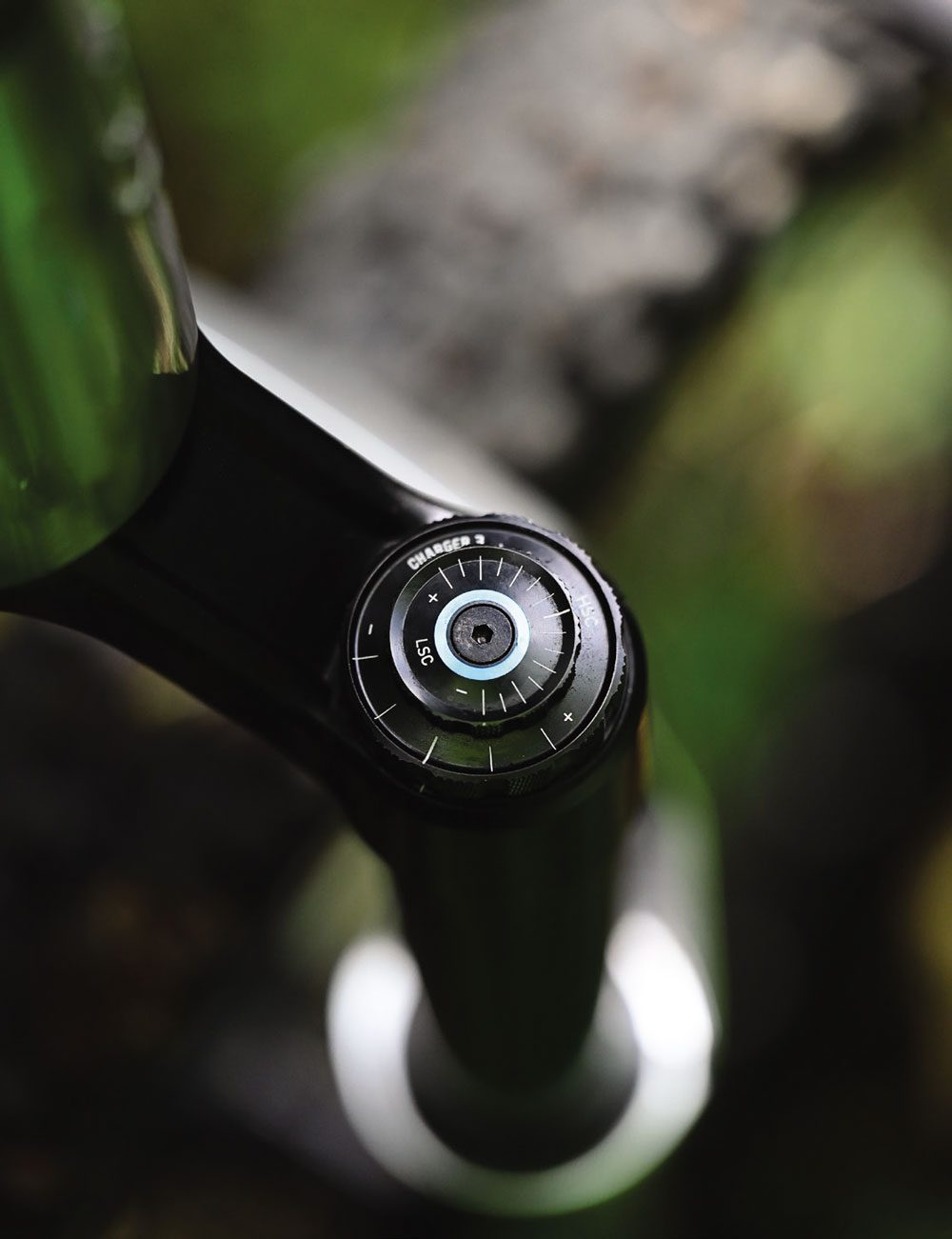
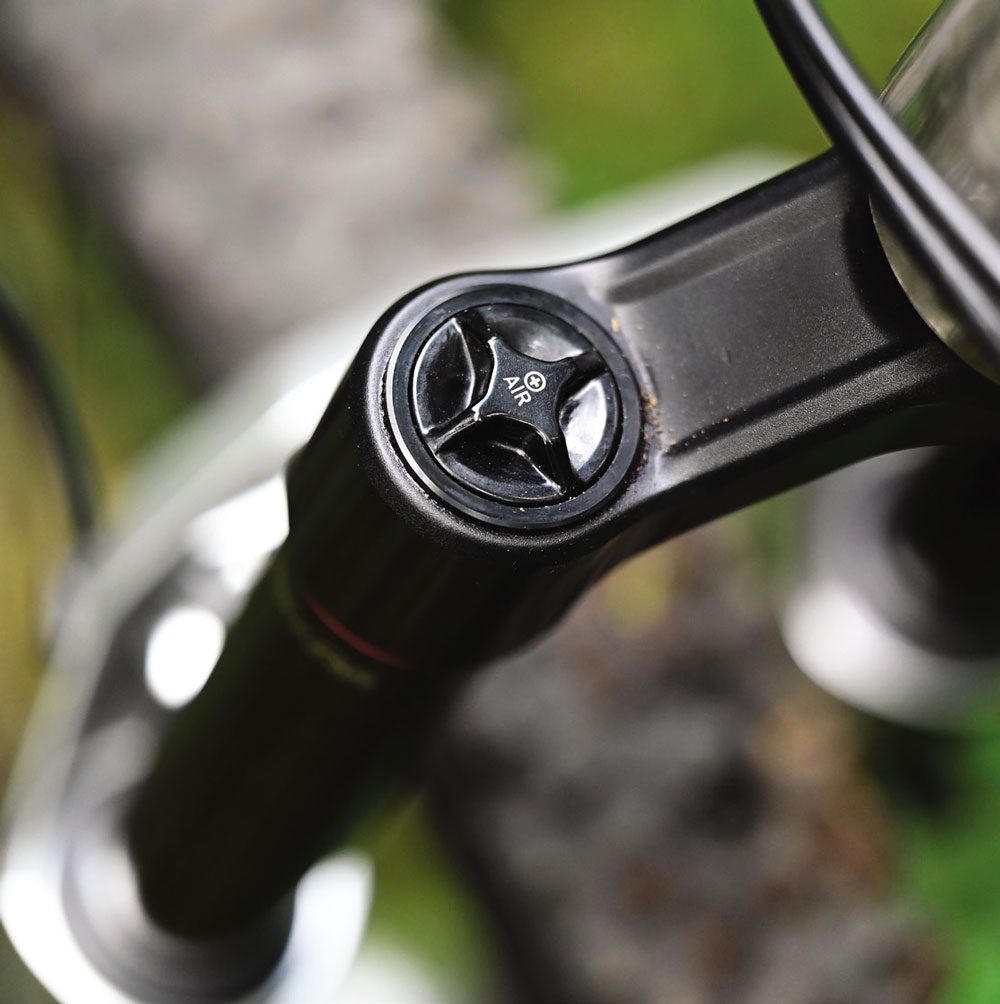
Setting it up on my Banshee Phantom down-country bike, I was immediately impressed with the new look. The whole chassis has a modern, muscular look about it… and the silver was a great match too, which didn’t hurt. Straight away, I could tell that these were going to be a vast improvement over my previous Pikes in terms of small bump absorption — these things were smooth and would initiate into their travel with almost no force. The amount of stiction that is needed to be overcome to get the stanchions moving was almost non-existent. The first trail I rode, I could tell that these were indeed a whole new kettle of fish compared to the previous version.
The biggest realisation was how the first 30-40mm of travel seems to be noticeably more active. Whereas I was previously reasonably happy with my old Pikes (yes, regularly serviced) these new ones made the old ones feel, well… let’s just say, they’re not around anymore. Fast forward a few rides and the next thing I started to notice was how much more regularly I was using all the travel. I’d look down at the travel indicator O-ring and see that I had used all the travel, however, while riding I never noticed feeling like I’d bottomed out. They seem to have also improved the feel of the curve as you move towards the end of the travel to make it feel like you never really hit bottom.
This is just a ‘first impressions’ review but we are looking forward to putting some serious miles on these throughout summer and seeing how they hold up over the long haul, as we test them through a variety of conditions and have time to fully experiment with the various tuning options on offer.
REVIEW: LANCE PILBROW
DISTRIBUTOR: WORRALLS
Product Review: Rapha Trail Shorts
“Every piece of clothing comes with a field repair kit containing fabric matching iron-on patches to keep you looking good after a crash.”
It’s no secret that this brand comes from the ‘roadie’ scene. But this means they know a thing or two about use of good fabrics and have been making ‘roadies’ look good for years. Rapha has now employed their knowledge around textiles to mountain bike apparel. Their focuses are on sustainability and longevity — and I can vouch for their products lasting many seasons. Rapha’s colourways are normally subtle, so you needn’t worry about being out of vogue whilst on the trail.
The Trail Short is a built from four-way stretch material that is Bluesign certified, meaning it is built from sustainable sources with minimised environmental impact. An integrated, contoured waistband allows for precise fit adjustment and there are four pockets, two of which have zippers with an integrated phone sleeve to keep items from sliding around. The cut is fairly form fitting but has been designed to work with or without knee pads.
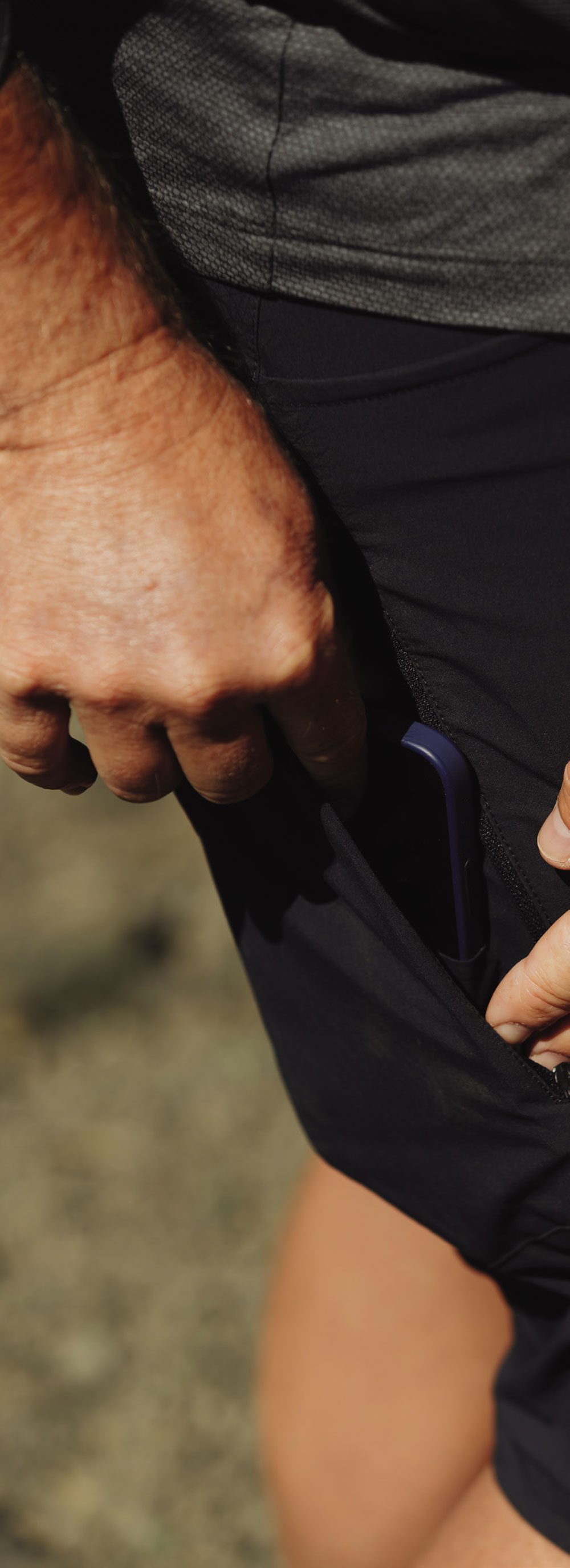
The Trail Short have a relaxed and comfortable fit that slides over small to medium knee pads with no issues. Larger, downhill style knee pads may cause the shorts to bunch up and sit on top of the pad, though. I found they fitted my medium knee pads well and were also good without, too. The short is a little more form cut, which means there’s no bunching and they don’t get in the way when you’re pedalling. They certainly don’t have the bagginess of other shorts on the market.
The adjustable waist is neat and easy to use, locking in a personalised fit with no slipping of the belt. The size medium was a perfect fit in both the waist and length for me. Having had these shorts for a while, I found the breathability to be moderate even in the warmer months. They breathe well and don’t overheat, but a few vents would just allow a bit more airflow, especially if you’re wearing a bib-short underneath. The zippered pockets keep trail essentials secure, and the phone sleeve is a very well thought out solution to keep your phone from bouncing around. I really like this feature, and the position means the phone feels like it’s out of the way but always accessible for that quick pic or vid.
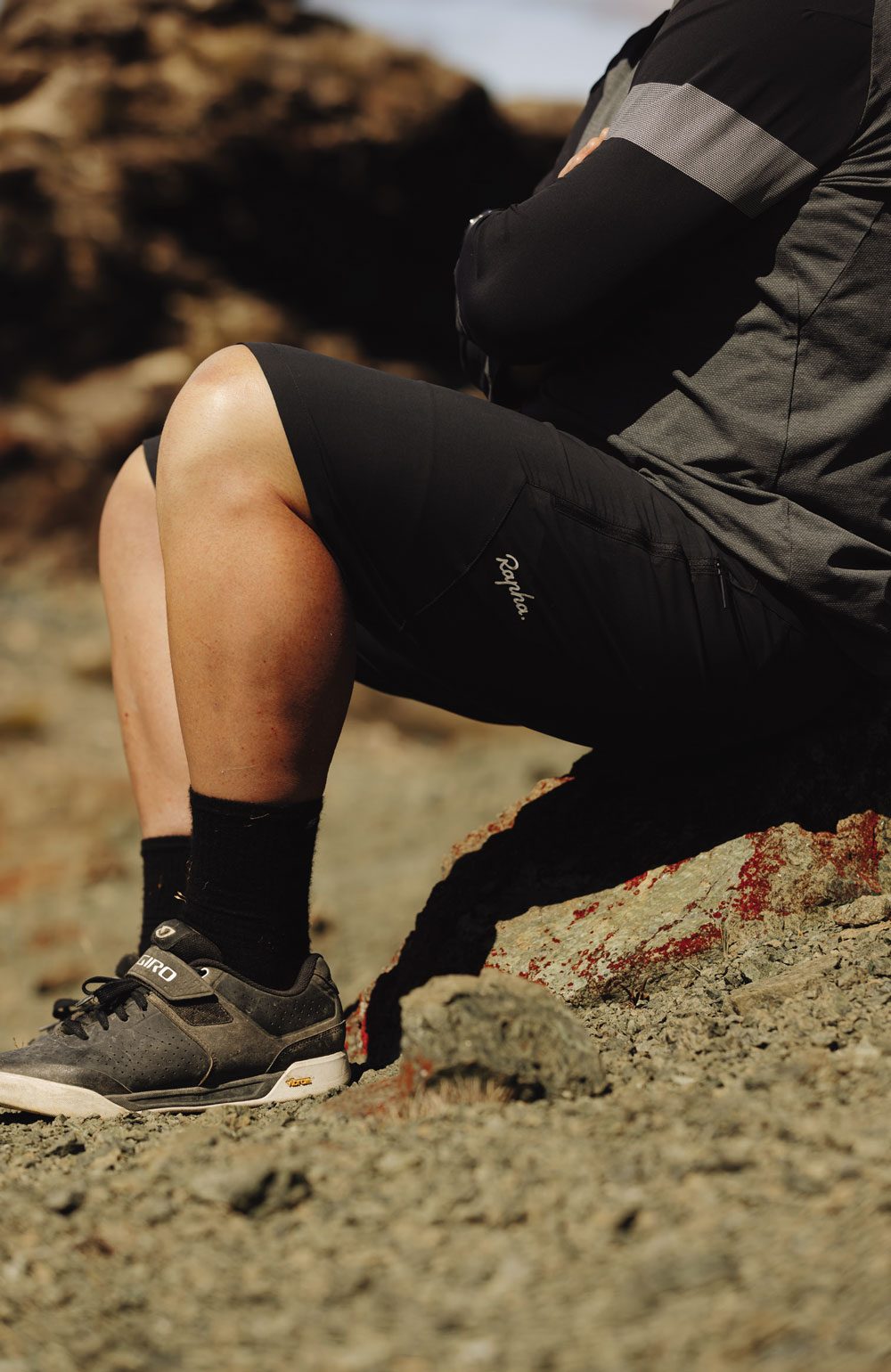
Rapha has priced these shorts consistently with the market and offers several services, such as free repairs and free returns if you’re not happy with them. Every piece of clothing comes with a field repair kit containing fabric matching iron-on patches to keep you looking good after a crash. Heck, if you shed some kilos they will offer 50% off your jersey in a smaller size. I’m a big fan of buying a quality piece once, rather than buying cheap stuff every year — and Rapha promises exactly that: quality and longevity, with repairs if you do happen to find a way to destroy it.
REVIEW: LIAM FRIARY
DISTRIBUTOR: IRIDE / RAPHA
RRP: $195 AUD
nar dapibus leo.
Bike Review: Trek Fuel EX
In the bike world, we often hear about ‘incremental improvement’. Teams take a lot of things into consideration that seem trivial but, taken on the whole, they add up to the small advantages that make the difference between winning and losing.
The same sort of thing applies to the bikes that get trotted out each season.
The reality is, within most categories, the bikes available have been very good for a long time now. The stuff that gets bolted on has been equally good for just as long. That high level of functionality means incremental improvement is what we get.
In the case of the latest Trek Fuel EX, it is a revision of a model that has been a mainstay for trail riders for 17 years. My personal bike has been one of these things for the last two iterations, and I can attest that although my first one was a very good bike, the next was slightly better and the latest one is better again – for my purposes anyway.
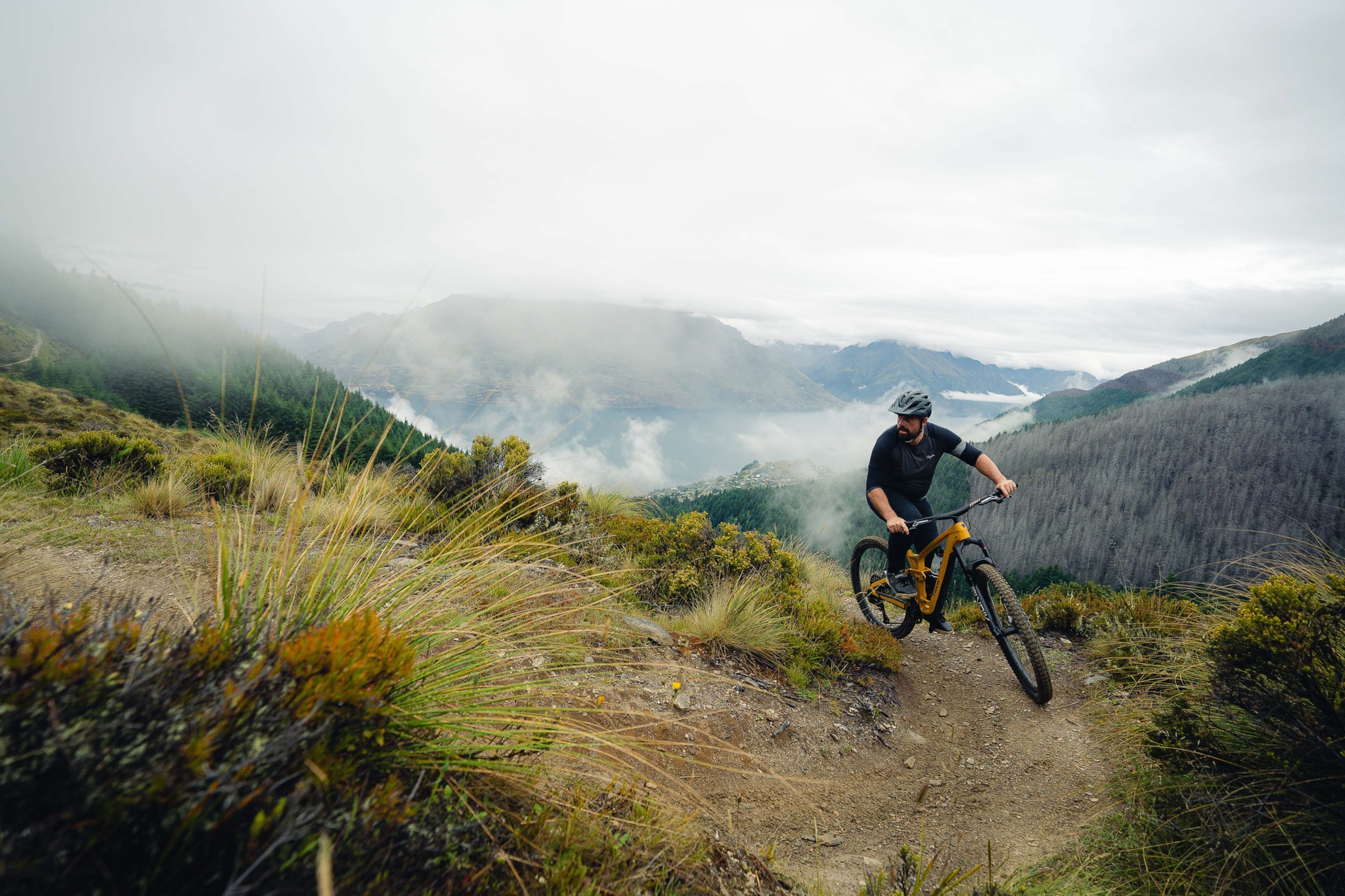
I switched from more boutique brands for a variety of reasons. Practicality, to start with. The bike shop I work with in my day job is a Trek dealer and, yes, I admit I got a good deal on my first Trek. But the main thing that made me give the bike a go was a conversation I had with a friend who runs a high-end bike and sports retail store in Germany.
In his country, Trek is seen as a market-leading brand with the best technology, and customers pay a premium for the products. The retail environment in New Zealand is a bit different, and Trek is one of the brands that is available in the two big chains of retail stores. Not necessarily a bad thing, but it puts a brand in a different sort of light.
I looked at my mate’s input as a reinforcement of my decision to go mainstream, and ordered my first Fuel EX.
I rode that bike for two years, and had the same amount of strife as I had on the boutique brand bike I had been riding. That is, not much. Everything worked, and there were no big problems. So, I was a lot more confident upgrading when the next major model change came along.
My current bike has also given me two years of trouble-free operation, and it was a lesson in the benefits of going with a gigantic company’s offer. A full carbon frame, carbon rims, and decent pile of components for a very keen price.
When I got the chance to spend some time aboard the latest version, I felt well-qualified to feel out what I expected to be very small differences.
The improvements turned out to be more than incremental.
The frame is a thing of beauty – but that is in the eye of the beholder, of course. It has a very similar suspension system to the previous model, with ten millimetres more travel at both ends – they have upped the numbers to a very middle-of-the-pack level for a 29er trail bike: 140mm at the back and 150 in front.
The new model features more adjustability. Trek has offered their ‘Mino Link’ flip chip in the rear suspension for many years. That is an eccentric unit in the upper link of the rear suspension that lets a rider choose between a lower BB height – that makes the front end a fairly slack 64.5 degrees – or a higher BB and half a degree steeper head angle. In the 2023 model, they added a flip chip in the lower shock mount which gives you the option of a linear shock rate in the ‘Less’ setting or a noticeably more progressive rate in the ‘More’ setting. There is also provision for a headset providing a total of two degrees of adjustment.
The frame design makes a coil shock a possibility, and you can even mulletise the beast if you so desire.
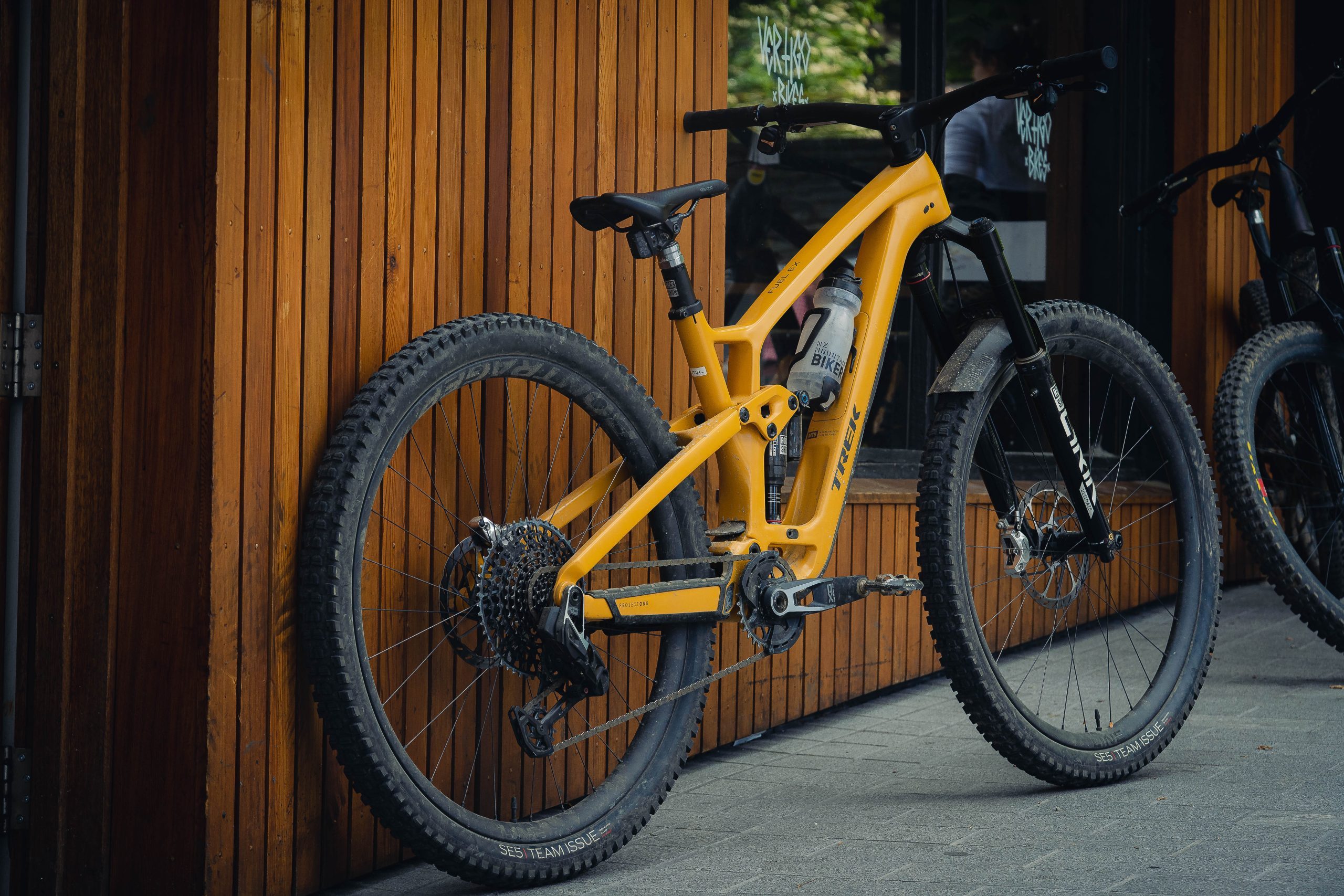
The frame is definitely burly. There is a lot of material in the big tubes and tough-looking support struts in the well-reinforced design. The claimed weight of the Medium sized carbon example is 3.4kg. That translates to a complete bike weight of 14.15kg for this top-drawer model on review. That is not a super light bike these days, and the lower-specced versions can see an extra couple of kgs added on. Does that make much difference to the overall experience of the ride? Not in my opinion.
Heading out into the woods on the new bike, the first thing I noticed was the change of perspective from my cockpit point of view. My ‘old’ bike is a 2020 model, which has a 66 degree head angle and a 140mm fork. A degree and a half slacker, and 10mm more travel, doesn’t sound like much, but it puts that front wheel way out front. The effective seat tube angle has steepened by a whopping 2.5 degrees, to 77.5. The reach is stretched out by 5mm compared to the old machine, but that seat tube angle puts the rider over the centre of the bike.
The next thing I noticed was how spritely it felt. How a bike ‘feels’ is so subjective, I have always wondered why reviewers wax on about it, but now I am one. And how the bike feels is actually more interesting to me than all the numbers, especially the ones that refer to weight.
It feels light. It pedals incredibly well; the suspension platform is very stable with the air and compression settings set according to Trek’s online guide. It goes uphill better than anything in this reviewer’s experience – at least, that is the feeling I got from it. It isn’t a miracle machine, my Strava segments were still very average, but there were some PRs!
Same going down. The bike definitely transmits more chatter to the rider than my previous Fuels, but that could be down to the very stiff, unified bar/stem fitted to the model I had. Dropping a little tyre pressure settled it down a lot. I have not had great relationships with previous sets of Bontrager rubber, but the tyres fitted to this bike worked very well. They are big and heavy, and at a spongy 18psi in the front and 20 odd in the rear, they stuck to the dirt.
The extra ten millimetres of suspension travel doesn’t sound like much but, combined with the geometry tweaks, it really inspired confidence on downhill trails. I might not having been going any faster, but I felt great.
The down tube features the same storage facility that has been on the Fuel from 2020, with a cover that is secured by a lever tucked under the bottle cage, which bolts to the cover. There is enough room in the tube for a spare tube, a small pump, and a toolkit as long as everything is packed so it can’t rattle around. I have been paranoid about damaging the inside of the frame by having something loose floating around in there, so on my Fuel I have repurposed some neoprene things I had kicking around to contain my pump and a multitool. The bikes come with a long folding tube holder, which will hold a lightweight tube if you are patient and careful. It has a red tape on the end to haul it out with, and stowing the tube holder stops anything else form sliding down into the bottom of the tube and out of reach. The only downside to this baggage compartment is that the lid can rattle – it has the weight of a bottle attached to it, which probably doesn’t help. The test bike’s lid didn’t rattle at all. While we are on acoustics, the very generous chain stay protector on the new model quiets the back end of the bike down.
My take on the 2023 Fuel EX is very positive. I liked riding it. For everything I like to do, it was hard to imagine much improvement.
There is a range of build options that all share the same carbon frame.
The test sled was the 9.8 AXS model. It is listed at $12,699 – and that is a fairly eye-watering investment but, when you look at the tech you get, it is a way south of what you would need to spend on many more boutique brands with the same level of kit. Wireless shifting, carbon wheels and bars, Fox suspension.
There is an XTR version at $14,499, but the one that stands out for me is the XT model, at $9499.
Same carbon frame as the pricier bikes, unified carbon bar/stem, carbon Bontrager wheel set, Fox suspension, and the tried-and-true shifting and braking of Shimano XT. Very hard to beat that combo, and you get the back up of a large operation when it comes to the fairly unlikely prospect of a problem. Sometimes big is good.
WORDS: GAZ SULLIVAN
PHOTOGRAPHY: JAKE HOOD
DISTRIBUTOR: TREK NZ
RRP: XT: $9499 / 9.8 GX AXS: $12,699 / XTR: $14,499

Review: Continental Kryptotal & Xynotal Tyres
Reviewed by Lance Pilbrow
Distributed by Worralls
RRP: $148
Continental have recently done a major overhaul of their gravity tyre offering. The range they offer now is almost overwhelming. Four new names, five new tread patterns, three casings, and three rubber compounds. It’s a lot to get your head around. To try and simplify things, let’s run through the tread patterns, which will help you narrow your choice down to match how dry or wet your riding conditions are. For hardpack conditions you start with the Xynotal tread pattern; mixed terrain is the Kryptotal (front and rear specific tread pattern); the Argotal is for loose terrain; and the Hydrotal is for mud. Got it? We’re just getting started. The Xynotal, Kryptotal and Argotal are all offered in Trail, Enduro, Downhill, or Downhill Supersoft casings (the Hydrotal is only offered in DH super soft). Oh, and then you choose how hard or soft you like your rubber: Endurance (harder); Soft (softer than Endurance); or Supersoft (pretty self-explanatory). Still with me? If you like Subway and getting your Sub just the way you like it, then you’ll be in tyre heaven. For all that choice, width wise, the Kryptotal Re is 2.4” or 2.6”, everything else is 2.4”, and that’s it. Everything is available in 29” or 27.5”.
Ok, so you have lots of variants to choose from. No, I did not test every variant. As much as I love new tyres, I have other things to do with my summer. I’ve been riding the Kryptotal Fr (Front) and Kryptotal Re (Rear) in the Enduro Casing, with the Soft compound, in a 2.4” width, this summer. This probably represents a fairly middle of the road option across the board. The tread pattern on the Kryptotal Fr has a 2-3-2 pattern down the centre, whereas the Re has a consistent 2-2-2 pattern. The Enduro casing has three layers of 110 tpi thread count and weighed in at 1125 gm
Out of the box, the tyres actually just look great. I didn’t know I was so attuned to what a quality tyre felt like, but these are that. The finish on the tyres is top notch. The graphics are perfect and there is a unique kind of embossed pattern in the side walls and in between the lugs. It screams German precision and quality. Getting them mounted up on my WheelWorks wheels was pretty tough, I’m going to be honest. Were these the hardest tyres I’ve ever had to mount? No, but it would be getting close. The casing is incredibly stiff. Just getting them on the rim felt like I was going to break tyre levers or damage my rims. Thankfully, that was all in my head, but it took a LOT longer to get them on than any other tyre I’ve used in the past. Once they were on, they sealed up nicely.

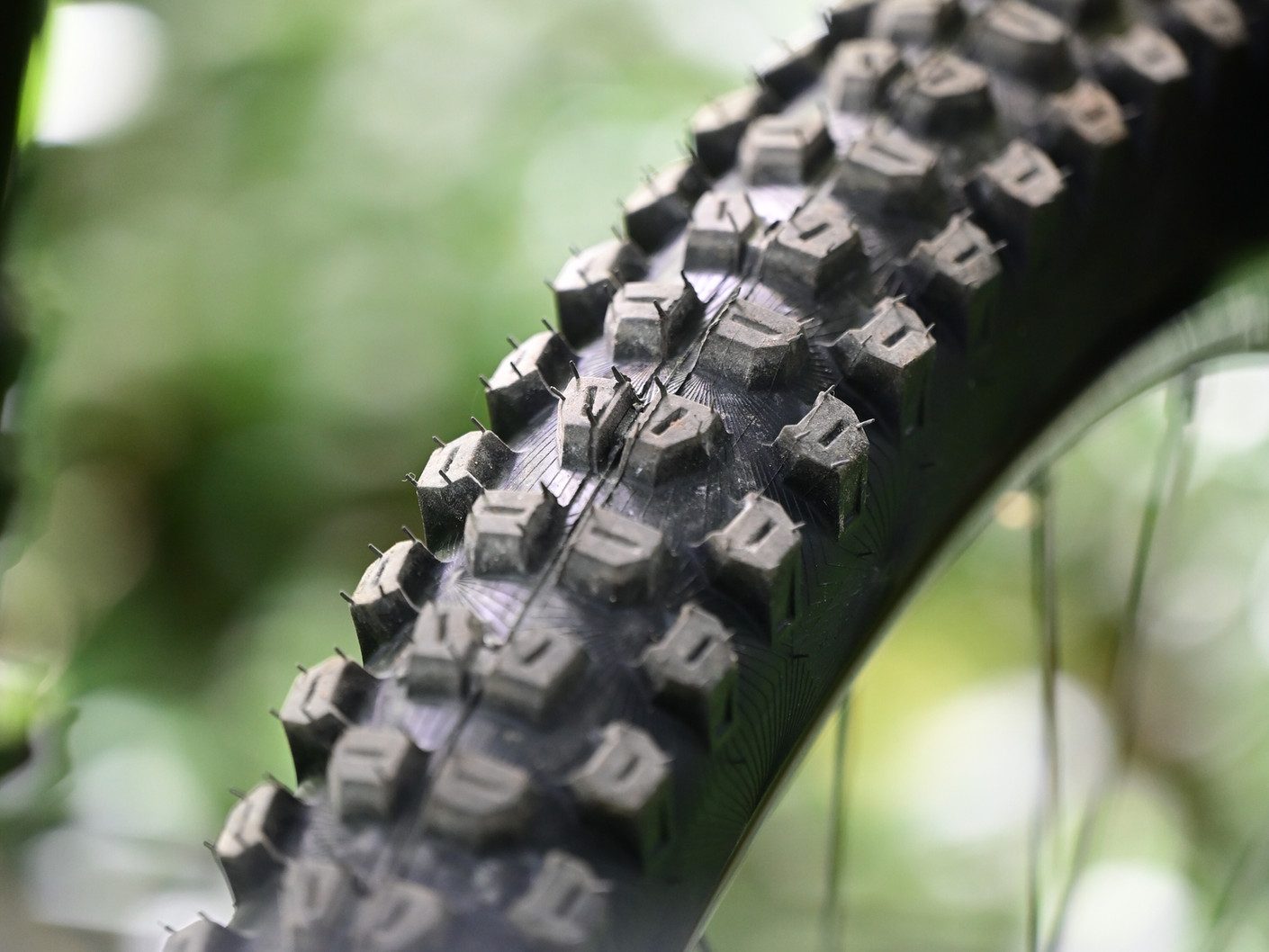
Visually, you can see that these tyres mean business – the lugs are tall and on the front there are generous gaps to help with mud clearance, enabling the tyre to really dig in. Out on the trail I have been really happy with the Kryptotals. The 2.4” width is spot on for trail riding and gives you plenty of rubber for when things get just a bit squirrelly. Having spent a fair bit of time recently on lighter, faster rolling tyres, coming on to the Kryptotals felt like I had traction in spades, and I always felt in control. I could push and push and it would always seem to hold. When heavy braking occurred, it would always hook up strong and this really made me feel confident riding them. I really noticed how, on a few favourite turns, I would try to push through and stay off the brakes, and the Kryptotal held the line incredibly well. Occasionally, I was actually surprised that I didn’t lose the front end, and was left thinking, ‘huh, I rode out of that?!’ with a great big smile across my face. This really helps with confidence and keeping your fingers off the brakes; holding your speed through the corners.
After a summer of riding, I’m happy to say the tyres still look great. The side walls are in great condition, and I haven’t had a single puncture, tear, or burps. If you’ve been a fan of Maxxis Assegai’s or DHR’s then I think you’ll find the Kryptotal to be right up your alley. I’ve been really impressed with these and will be leaving them on my bike for as long as I can. They gave me great confidence to push hard into corners and control when navigating heavy braking down steep descents.

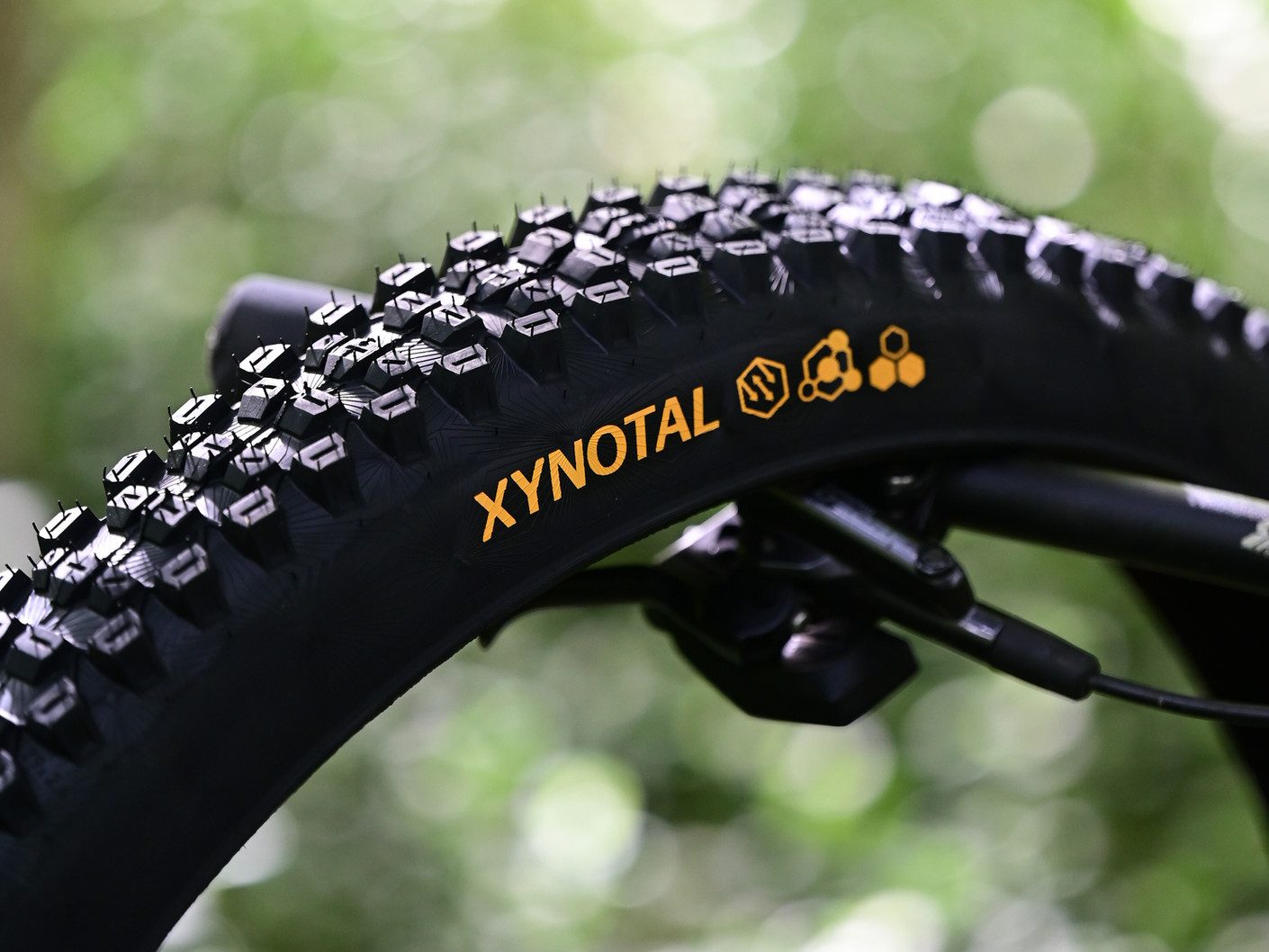
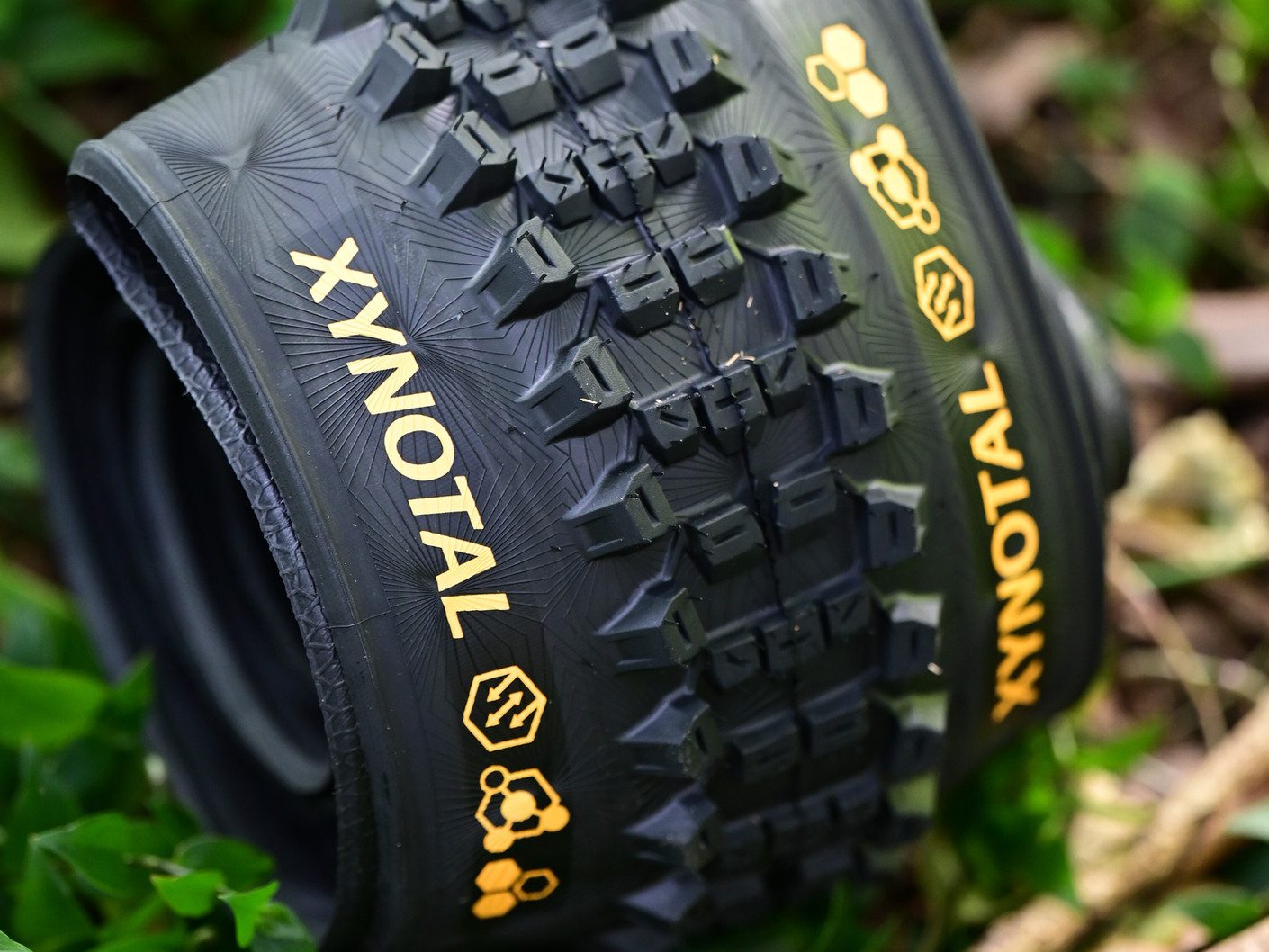
I also was able to spend a small amount of time on the Xynotal tyre too. This one is not offered as front or rear specific and, at a distance, it looks incredibly similar to the Kryptotal Fr. So similar it was a little like one of those ‘spot the difference’ cartoons but, after a bit more of a careful inspection, the Xynotal’s tread pattern is slightly closer together. On the part of the pattern where there are ‘2’ centre lugs, the Xynotal groups these closer together, whereas the Kryptotal keeps these further apart – presumably this helps the Kryptotal with mud clearance and hooking up in looser conditions (which is what it is targeted to do.) The Xynotal’s lugs are also considerably more bevelled down at the leading edge which should help reduce rolling resistance. All in all the Xynotal is theoretically designed for more hard pack conditions and may help the rider retain a bit more speed. On the trail, I found it really hard to tell the difference between the two – aside from generally feeling that the Kryptotal just had a bit more ‘bite’ to it. If I noticed it anywhere, it was on steep chutes under heavy braking. The Kryptotal just seemed to be able to hold traction for that fraction longer. This is all pretty arbitrary really, as it’s hardly a controlled test, but if hardpack conditions are where you ride, the Xynotal would do the job perfectly. As an all-rounder, I’d probably err towards the Kryptotal – and I like the front and rear specific options it gives.
The fact that the new Continental range is offered in so many variations of patterns, compounds and sidewalls is slightly overwhelming at first, but it means you can find a tyre that perfectly suits your riding style. Pricing varies across the range, depending on your variant. The Kryptotal’s and the Xynotal come in at $148 each.
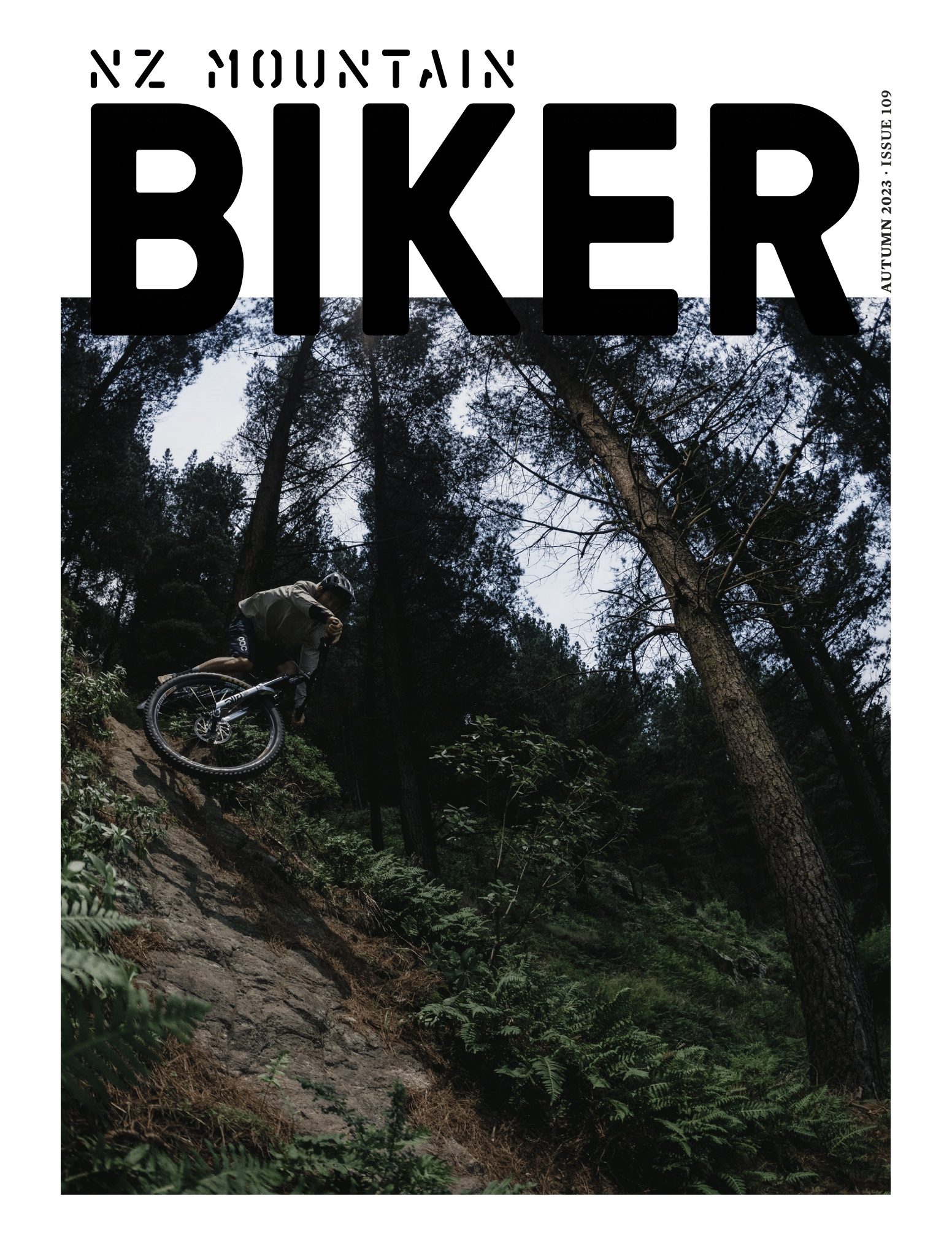
Review: Marin Rift Zone 2
If you’ve been around biking long enough, you’ll no doubt be in sheer disbelief over the price escalation that has been part of the sport. I’m not sure who is buying the $20,000 bikes on offer, but clearly someone is. In many ways, though, at the other end of the spectrum, the quality of ‘entry level’ bikes we are getting is incredible too. The Marin Rift Zone 2 (RZ2) is probably in this category, although we’re aware that calling a $3,499 bike ‘entry level’ clearly shows we’ve been drinking the MTB industry Kool-Aid by the gallon!)
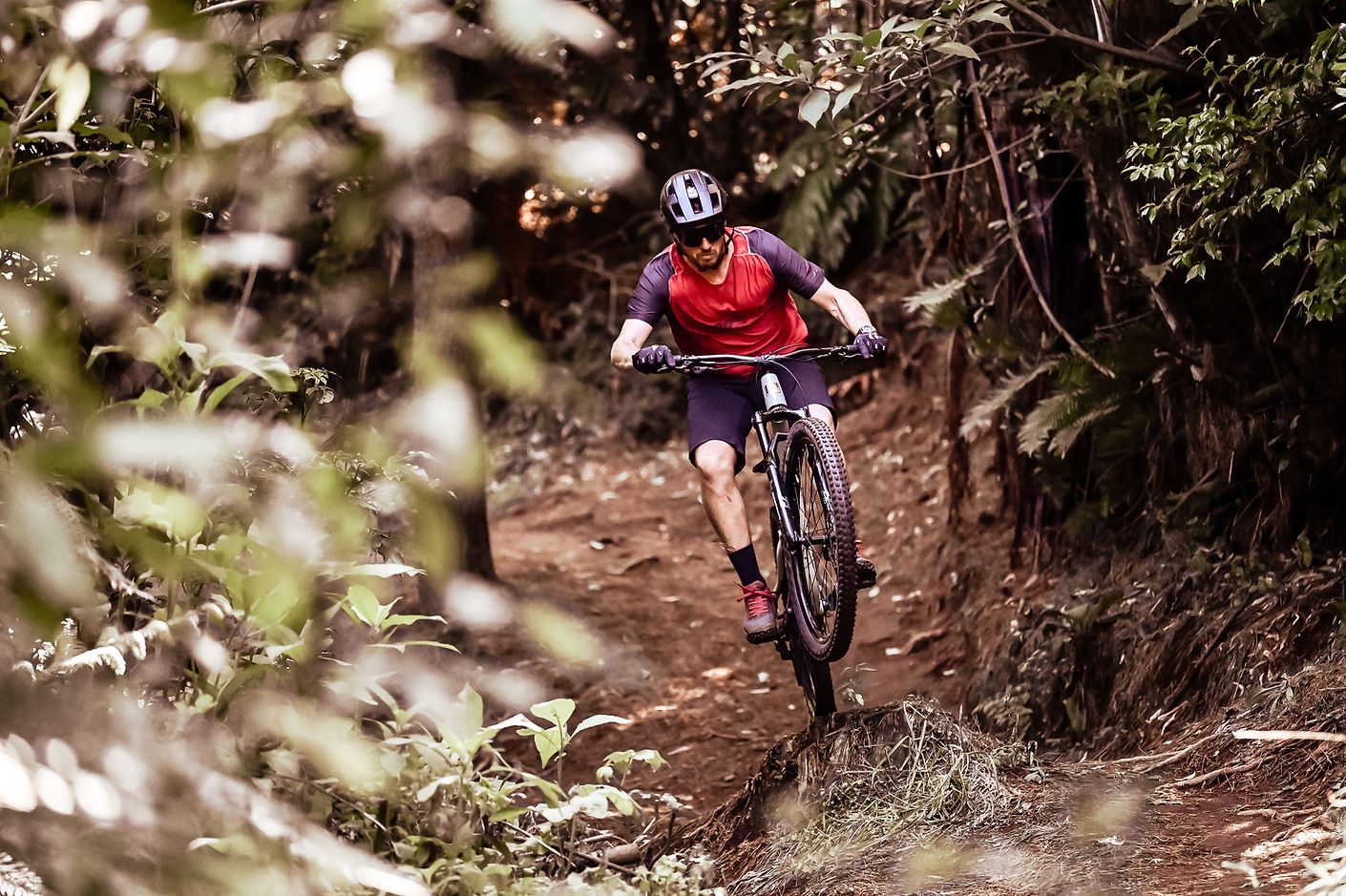
Marin Bikes have been around for, literally, ever - arguably among the ‘first’ of a group of mountain bike companies hailing from Marin County California. In recent years, they have been absolutely hitting it out of the park with quality bikes that look the biz - and at great price points too. The Rift Zone 2 is a perfect example of this; it hits so many of the right notes and, if you’re just here for the summary, it’s this: the Rift Zone 2 is all killer, no filler. A great choice to take your trail riding game to the next level, and feel really quite smug at your clever purchasing.
We tested the alloy framed RZ2, priced at $3,499. There is also a slightly lower spec RZ1 at around $2,899, and a flashier, more aggressive specced XR version, plus two carbon options above that as well. But it’s this mid-range option that will hit the sweet spot for lots of riders (or parents of riders). Spec wise, the Rift Zone 2 has a 140mm Marzocchi Bomber Z2. It may not be as flashy as its Fox or Rock Shox brethren, but this fork is a true workhorse and is capable of handling a wide range of terrain, from flowy singletrack to technical descents and everything in between. If you’re old enough to remember the original bright orange Bombers it’s got a certain nostalgia to it too. Handling the rear is the Rock Shox Deluxe Select RT Debonair, delivering 130mm travel. Despite being quite a mouthful of a name, the shock is pretty straightforward and proved to be highly responsive and supple. The Debonair technology provides excellent small bump sensitivity and a highly progressive ramp-up as you charge bigger hits and drops. This allows the shock to provide good levels of control and stability in most riding conditions.
Shifting is handled by the Deore 12-speed system. Well, at least the shifter and the derailleur are Deore; the derailleur features Shimano's Shadow technology, which provides good chain stability and reduces chain slap, ensuring that you get a quiet and smooth ride. We reviewed the Deore drivetrain a few issues back and were impressed by it - so long as it is kept clean as it does seem more ‘temperamental’ when it gets bogged down in grit and gunk. Sadly, you’ve got a Sunrace cassette, but that is something you will naturally update down the track. The cassette features a 11-51T gear range, which provides a 510% gear range, making it highly versatile and capable of handling a wide range of terrain.
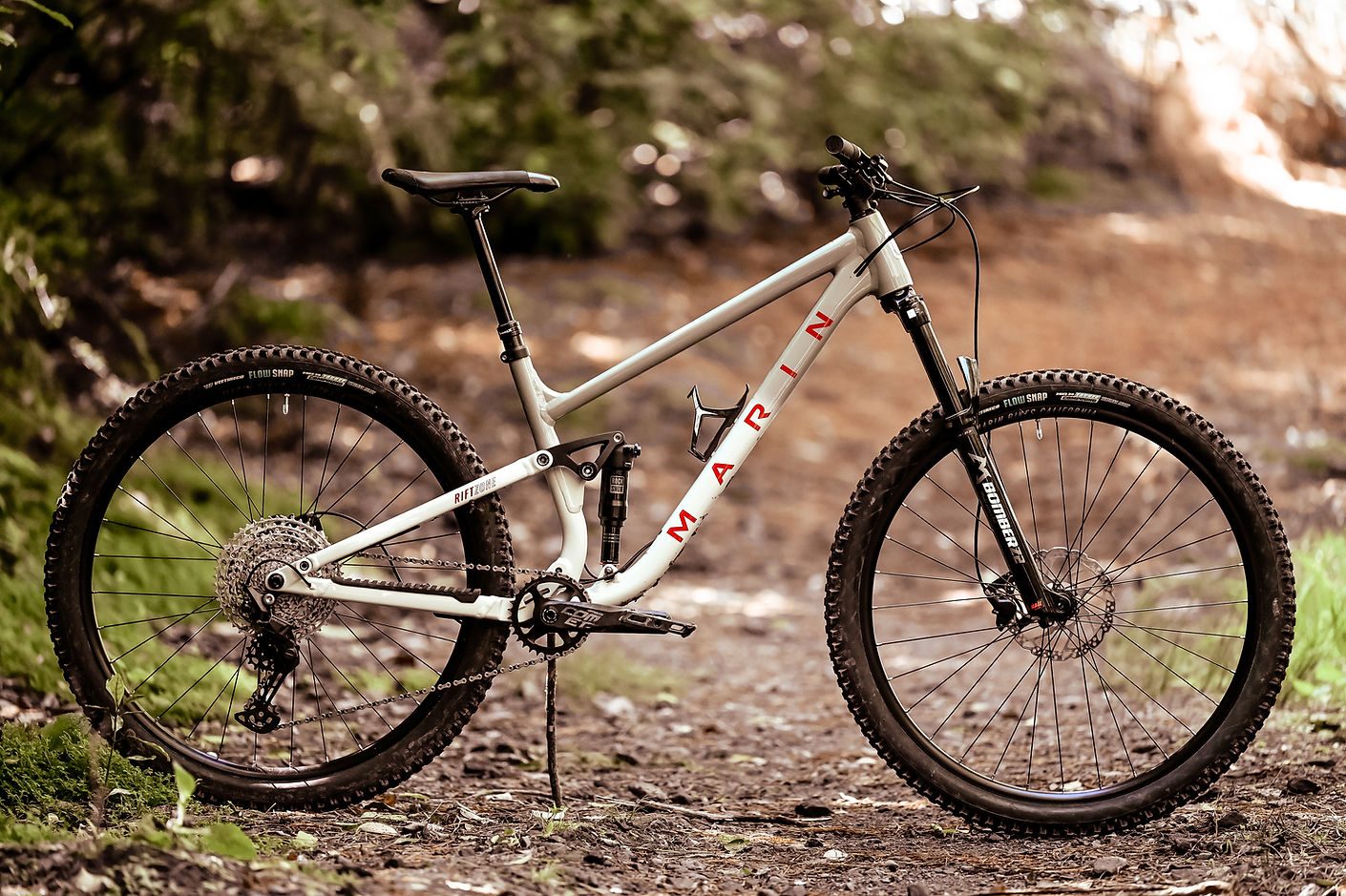
A Tranz-X dropper provides a simple but totally functional dropper seat, and it’s great to see it offered at a 170mm drop on all sizes apart from the small, which gets a 150mm version. The only other notable spec was the 2-piston Shimano brakes which felt like a swing and a miss. Even the low-cost M520 4-piston Shimano brakes would be a welcome addition, even if this raised the price fractionally.

Both carbon and alloy frames sport full internal cable routing in the front triangle with Marin’s all-new internal cable routing grommets providing a clean and rattle free cable set up. Colours are subjective, but most of our riders were impressed with the simple grey/white fade and striking red graphics. Geometry wise, our size large had a fairly lengthy 485mm reach and fairly slack 65.5 head angle. Remember, this is only a 130mm travel bike, but it is clearly pitching itself at the aggressive end of the ‘trail bike’ spectrum.
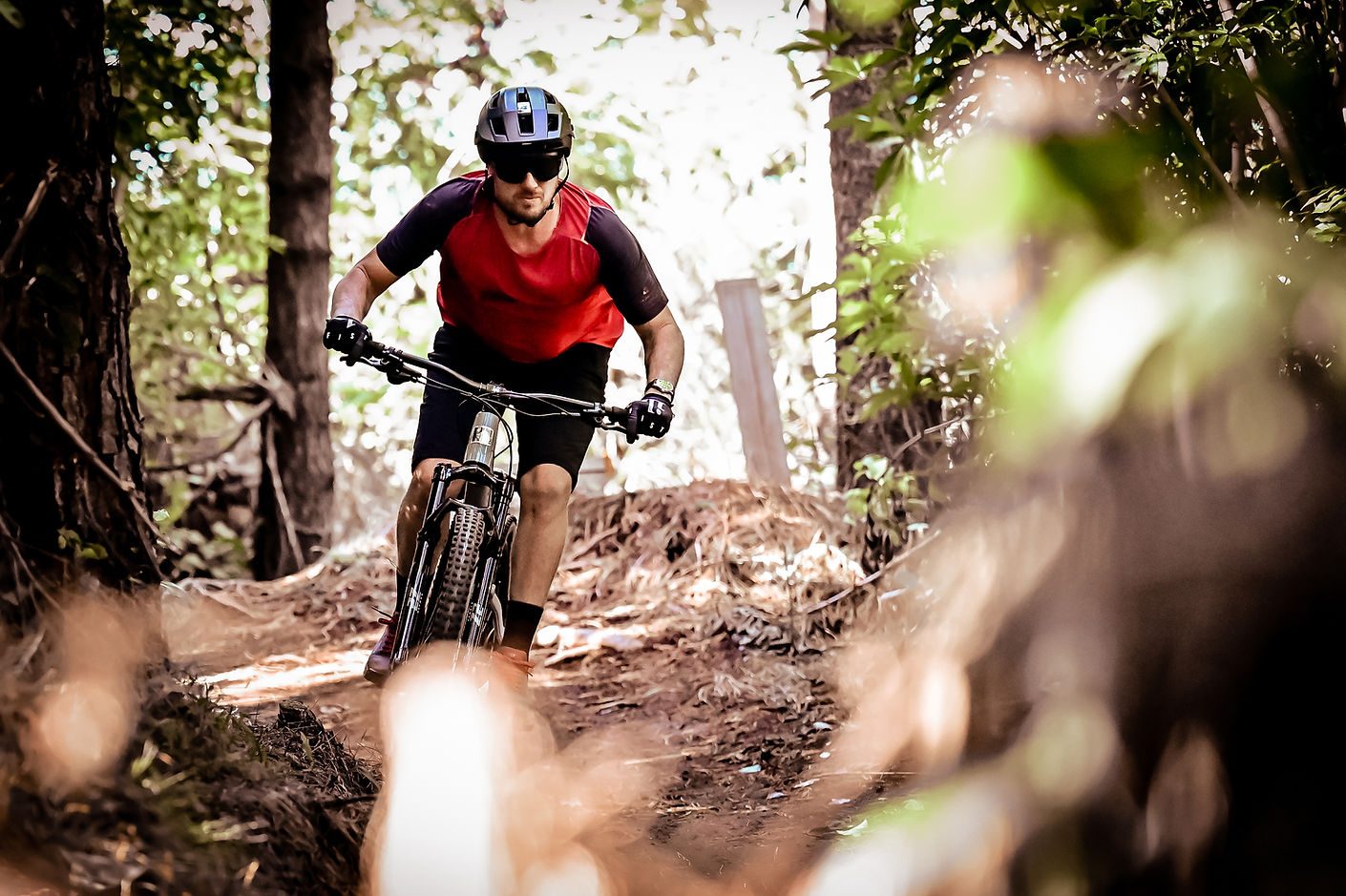
On the trail we were immediately impressed with the Rift Zone. The phrase that kept coming up was ‘bang for buck’. It doesn’t have any particular bling, but that doesn’t hold it back from doing everything it needs to do. Marin’s MultiTrac suspension system delivered a balanced ride capable of absorbing big hits with an ‘efficient enough’ pedalling platform. We were really impressed with just how much of a lively combo the slack head angle and moderate amount of travel made. Longer travel bikes can feel like they take excessive rider energy and input to ‘get up and going’, but the Marin feels spritely; the short chainstays and low bottom bracket height make for nimble and agile handling on tight turns and technical terrain. Despite being on the lower end of travel, the slack head angle gives the rider plenty of confidence to have fun and attack whenever the trail presents an opportunity. This is a winning combination for many of us, who need one bike to do most things well.
The Vee Snap tires specced also performed well. Being a new tyre for our testers, it has an aggressive pattern and seemed to pump up wider than its 2.35” label. They gave good grip and cornering ability on a range of terrain types, from loose dirt to rocky surfaces. Other parts handled suitably well too. The Bomber fork was surprisingly capable, and even outshone the RockShox rear shock which we never quite managed to get dialled, but maybe reflects its price point. The only thing we kept coming back to, were the brakes. The bike wants to be ridden hard, but 2-piston brakes have their limit and longer, steeper descents reminded us why 4-piston brakes would be a better option. It’s not a deal breaker, but something that could have made the RZ2 an absolute home-run.
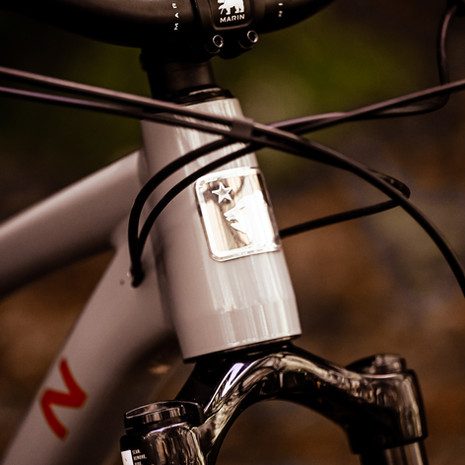
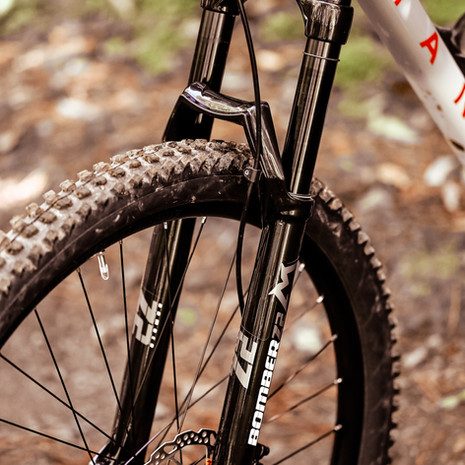
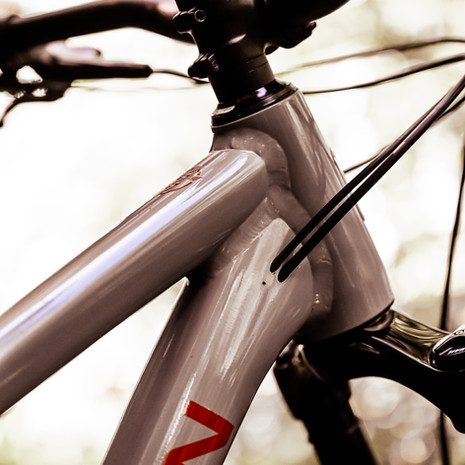
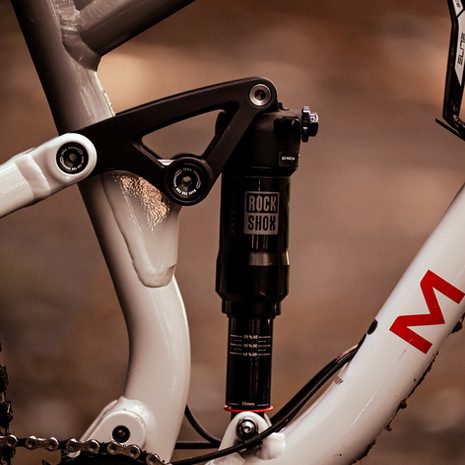
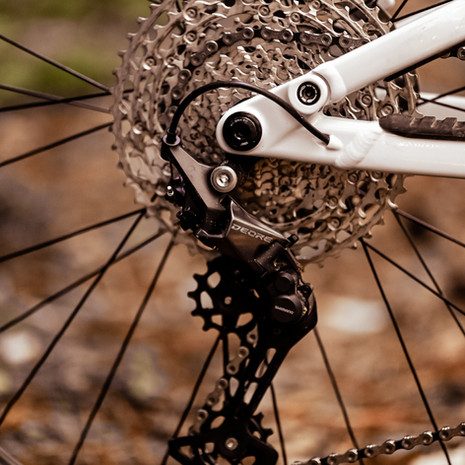
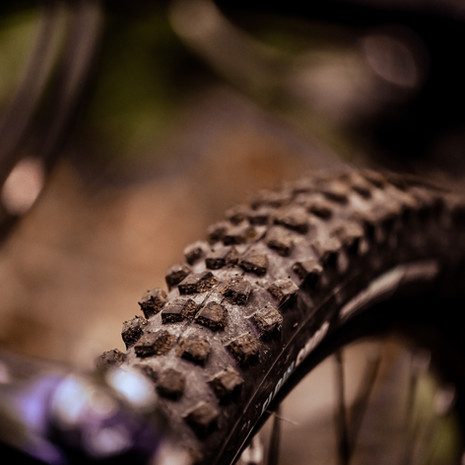
Talking to a local bike shop mechanic about the Rift Zone, he pointed out that, from a shop perspective, they have been really impressed with the Rift Zone and have seen very few issues come up, which should give buyers confidence too. They’ve sold a lot of them to teenagers, where parents are looking for a bike that is going to let their child really expand their capabilities without breaking the bank (too much). I can see that being a great fit.
Ultimately what really stands out about the Rift Zone 2, is its versatility. This bike is designed to handle a wide range of terrain, from flowy singletrack to technical descents and everything in between, and it’s not afraid to jump - something a teenager, in particular, will really like. The bike's geometry and suspension system make it highly capable and able to tackle any trail. It all comes together in a package that really feels like value for money, and greater than the sum of its parts.
Distributed by Advance Traders l RRP: $3,499
Words: Lance Pilbrow
Images: Julia Moore-Pilbrow
Review: Aeroe Spider Rack
Review by Odin Woods
RRP: $199
Find out more here.
“The Spider Rack system is comprised of a rear rack, rear cradles, front cradle, and some nice dry bag options to suit just about every bikepacking pursuit.”
When I think bikepacking, I think of drop bars, janky bags and loose straps hanging off every corner of the bike.
Some of those janky seat bags, front rolls and frame bags have become more refined over the years – to stop stuff bouncing, swaying, and ultimately falling off your bike – but there still isn’t the perfect solution for all occasions by any means. Consumers pushing for cleaner, simpler, less faffy ways of mounting bags on bikes continues to drive innovation. Innovators, like brothers Mike and Paddy Maguire at Aeroe, have certainly played their part in that move. You can thank them for the original freeload rack (now sold by Thule) – which I’m sure many of you have seen over the years – and now for the Aeroe Spider Rack system. The Spider Rack system is comprised of a rear rack, rear cradles, front cradle, and some nice dry bag options to suit just about every bikepacking pursuit. All the parts have a very modular feel about them, and you can tell each component has had a lot of love poured into it, design-wise, allowing for a very simple and easy-to-use product.
I’m kind of a ‘rip the packaging open first, read the instructions later’ person, and if how something is supposed to work isn’t immediately apparent then, in my opinion, it isn’t effortless for the customer. I applied this logic when first fitting the rear rack to my gravel bike and was quickly impressed with how simple and easily adjustable everything was. The mounting brackets can rotate to accommodate different seat stay angles and the rack itself can flex to achieve different widths. The rack height can also be adjusted +/- 30mm by loosening the four bolts and sliding it up and down through the mount to adjust the clearance around the rear tire. Nipping up the 5mm Allen key, the Silicone coated straps effortlessly tension up to keep the rack secure, without risking damage to your frame.
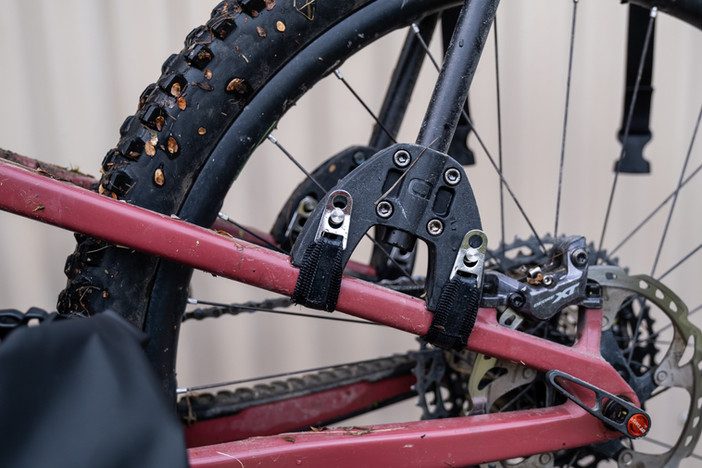
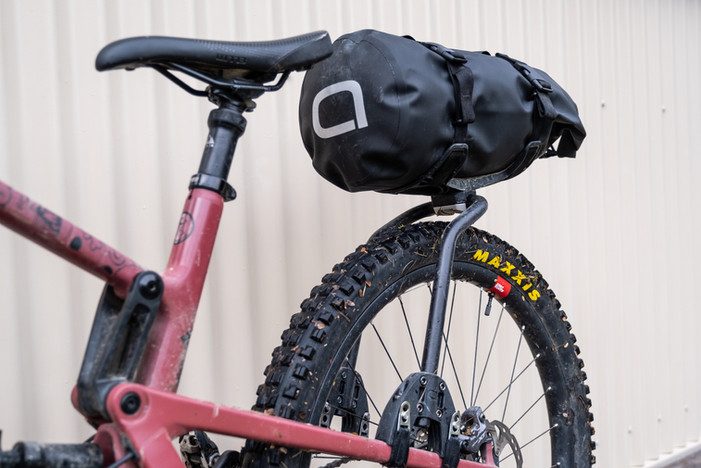
“I more or less forgot that there was a 12L dry bag strapped to the back of my bike. The rack was rock solid and didn’t make a sound.”
I pulled it off and within three minutes had it mounted on my Santa Cruz 5010. I chose to flip the entire rack 180° so the cradle sat back a bit further and lower down to clear my seat on compression. Aeroe note this as a ‘hot tip’ in their install guide.
It was time to put this stuff to use! We gapped it out of town to a quiet wee hut for the night and opted to use the Spider rear rack, with a single cradle, and the 12L dry bag to hump our gear up-river to the night’s accommodation. It was a quick transition in the pouring rain from empty bike to loaded bike. We simply clicked the cradle’s integrated buckles over the dry bag, then we were off. Jordan opted to mount his rack facing back as well, and had plenty of clearance over a 29er rear wheel as we bounced our way across tussock, river lands and the beech forest beyond. Without the usual constant swaying of a loaded seat bag, I more or less forgot that there was a 12L dry bag strapped to the back of my bike. The rack was rock solid and didn’t make a sound. When it came to dismounting and crossing some of the bigger rivers, I could fully drop my seat and climb off easily! Getting to the hut, it was nice to just unclip two buckles and not have to fumble around under the seat trying to pull straps through to remove a bag. My clothes and sleeping bag were nice and dry, courtesy of the super durable dry bags.
Loading up was, again, as easy as stuffing a bag full of gear and strapping it on. I gave my rack the once over just to see if anything had moved, but everything was where it was supposed to be and riding behind Jordan over some of the rougher sections of trail made me realise how little the entire system moved as well.
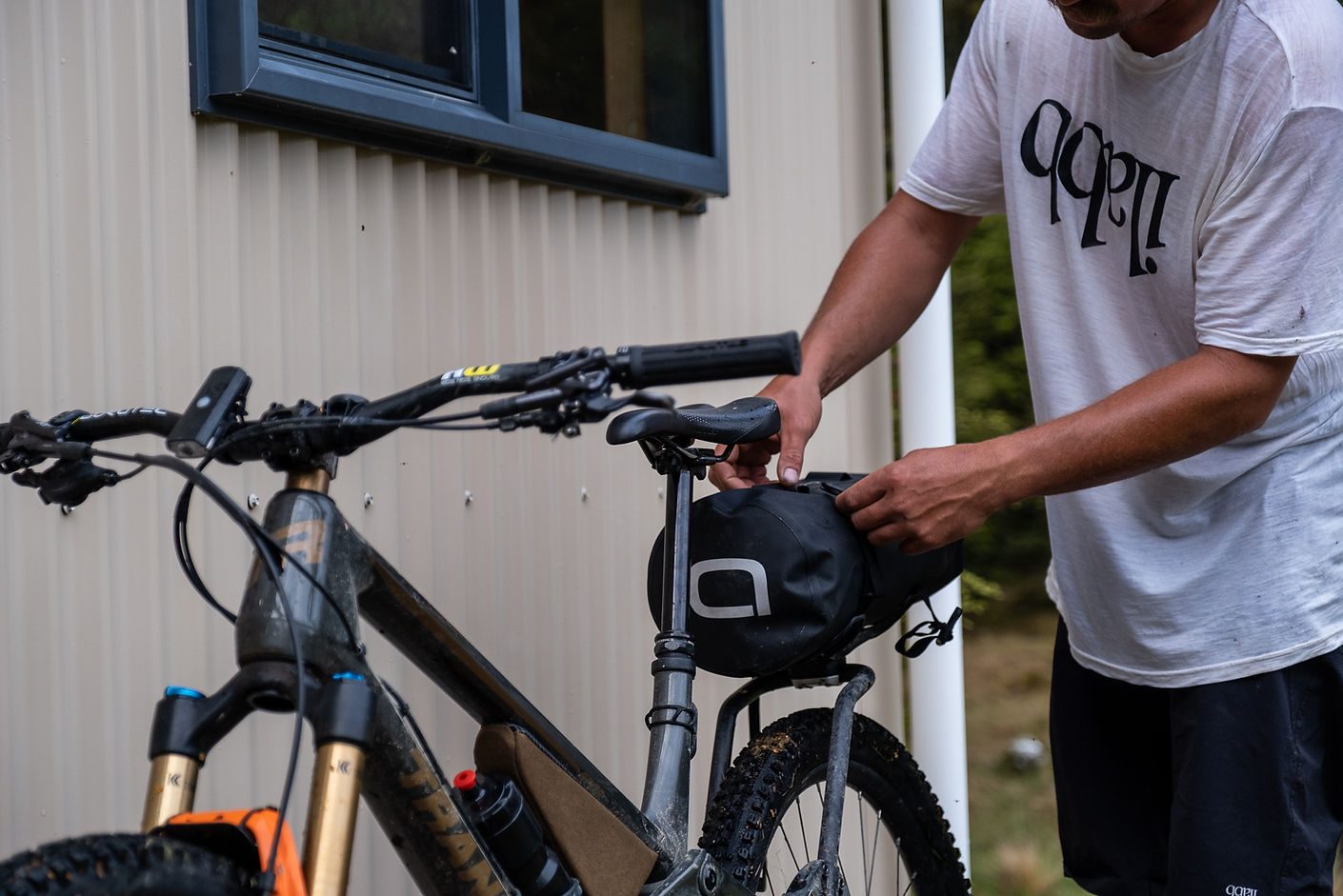
As mentioned, we only used the Spider rear rack with one 12L dry bag, but it’s worth noting that if you wanted to you could add another two cradles to each side and strap on another two dry bags – or a tent, fishing gear, whatever you want. One small thing to mention is that the straps that hold the rack on could be easily lost when the rack is removed, so putting a small rubber band around the end while on the rack would stop them being accidently dropped.
The weight weenies will note that the rack and cradle weigh in at 996 grams, not as light as a seat bag, but there is no questioning the robustness of the rack and cradles solid design. With that in mind, if you are planning to use this system for bikepacking, on rougher trails, it is reasonable to accept the 400-odd additional grams for the sake of longevity.
Rounding out, I found my time using the Spider Rack system sturdy and reliable with no surprises. For the price, I think it’s fairly good buying considering its versatility to move between bikes without too much hassle – plus, you can add to it when you need to.

Bike Review: Trek Fuel EXe
This is a review of the Trek Fuel EXe, a great example of a new category of mountain bike.
It will not be like any review you have read before. To be honest, there is not much point in rattling off the geometry, the parts spec, the wattage and the torque figures. Anybody who is remotely interested in this bike has already watched a dozen in-depth videos, and people moderately interested probably know more about the kit that comes on each model than I do.

The exact version I got to test is not even available in New Zealand, so I am not going to pick that apart in much detail either.
What I am going to try to do is relate how this bike has affected me, and what it has meant to my bike riding. My last year or so has been so weird and life-changing that I have been planning to write a story about it, and this bike has come along at the right time to get me started.
Some context: I took up mountain biking almost 40 years ago. I had taken a few years off bike riding after I threw in the towel on my track racing career, and got sidetracked by learning to be a designer. I didn’t really miss bike riding until I saw my first mountain bike. I bought the first one I saw that was for sale.
Since then I have slowly worked my way through many kinds of bike riding. Six-week bike packing trips, cross country races, downhill enduros, a short stint on a BMX, over 20 laps of Lake Taupo on various road bikes, single speed races, 24 hour races, multi-day mountain biking expeditions - I even ended up back on a velodrome.
I have always been able to ride enough that if any of the above activities came along I could select the appropriate bike and have a go at it. Even as I got older, fitness was never a consideration - I could get away with going on any of these outings without any need to prepare.
2020 was one of my best years since bike riding once again became my thing. A weekly fang on the track bike, an unusually mild winter for mountain biking, some great days out on the gravel bike, then two trips to the South Island for long weekends riding legendary trails in great company.
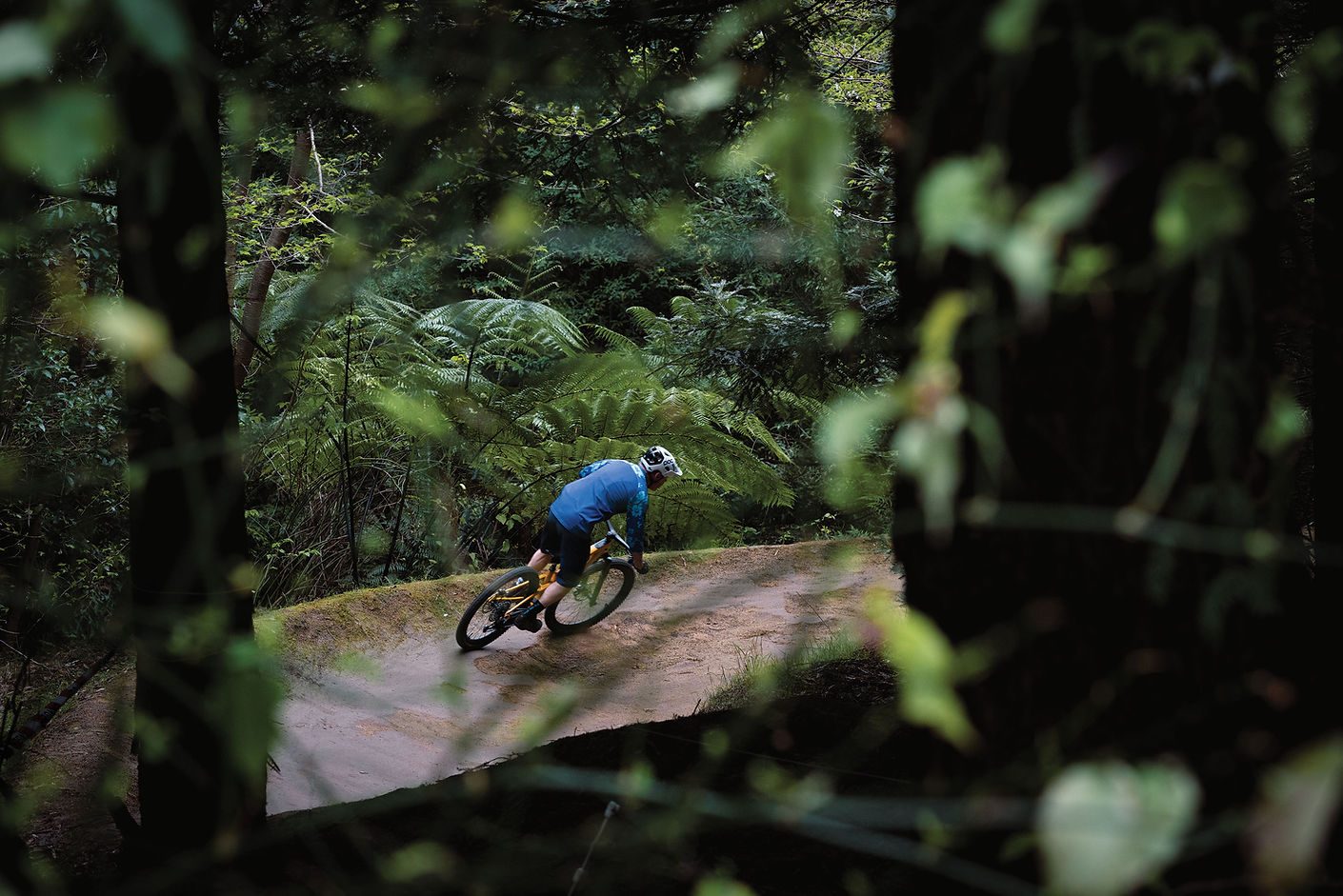
Come February that summer, a swelling in my neck became a major health problem. I was very lucky - what I had was treatable. The treatment was pretty heinous.
So this story is about what it means to be a bike rider who is fairly capable, rendered completely incapable in order to stay around.
Treatment lasted seven weeks, plus another six or seven in a bit of a mess, and as many months in a much reduced state. On the plus side, I got down to what was my 1977 racing weight. On the down side I was weak as a kitten and needed to sleep a lot.
I started back on regular food about a month after treatment, and got the last of the tubes that were installed taken out a couple of weeks or so later. I had my first bike ride post-illness about then, and managed ten slow kilometres on the flat. With some half-hearted wheelies and skids.
Over the next few months I got better at bike rides, got busy on some landscaping projects, and tried to remember what I do for a living.
My specialist, to whom I owe the success of the treatment he designed, happened by chance to also be a mad-keen bike rider. Bizarrely, he ordered a product from our online business the day before our first clinic, quite by coincidence. He understood what I would be trying to do when I got back into it. He encouraged me, with a round of cautions. Don’t expect too much, you won’t be like you were before, and get yourself an e-bike.
I sort of listened, but mainly figured if I ate a lot and was patient I would get back to normal eventually.
I didn’t get an e-bike.
I slowly added kilometres to my distance covered and metres to my altitude climbed. By six months out I could do a decent three hour ride in the trails, and climb up to the best bits under my own steam several times in a ride. I was probably back to being ok for my age, regardless of being in recovery. So, pretty good.
My problem was a ride like the one described would lay me out for several days. I might not get back on a bike until midweek, if at all. My old coach used to say “a little, and often” was the best formula. I didn’t follow that adage, I went out and did the ride I really wanted to do, smashed myself, then took days to get over it.
That was my status when I got the chance to do a long-term review of the new Trek Fuel EX e.
Getting acquainted with the bike was very easy - my daily ride is a Fuel EX from 2021. The e-sled shares that DNA, and is a logical development of a model that has been around in the Trek range for seventeen years.
It looks really good. Whether you like the look of a bike is obviously a matter of personal taste, and for me it is one of the best looking mountain bikes of any kind, ever. The design of the full-carbon frame is considered and resolved. That it is electric assist is irrelevant, it is a good looking thing.
The initial thrust of the bike industry’s e-bike thinking was to give riders heaps of grunt over a long day out. Like, if we want to sell any of these things we have to make them go as far as any of our customers will ever go, even if they only go that far once a year.
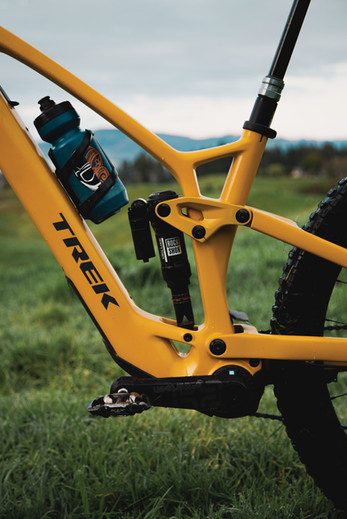
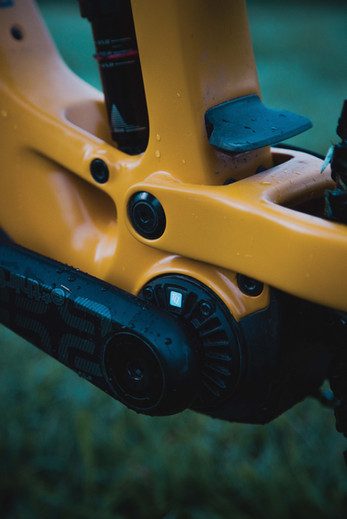

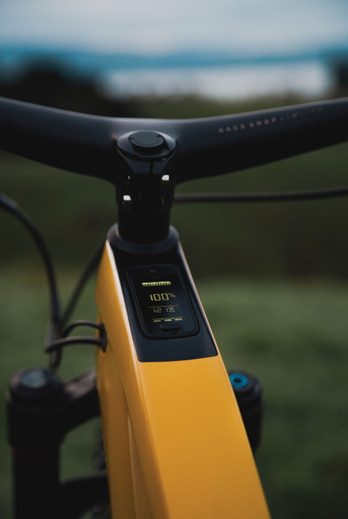
Well, OK. But that means riding a big, heavy beast on all your outings. The Fuel EXe weighs in around six or seven kilograms less than its full power brethren, and the electrics are packed into a much smaller part of the bike.
The motor and electronics from German robotics company TQ fit into a slightly enlarged bottom bracket casing, and under a neat little display buried in the top tube. A discreet pair of switches next to the left grip controls the system.
Whether it matters or not to the general populace, it doesn’t look like an e-bike.
On my first ride I met some people I know at the top of the trails, about to head into the jungle. One of them came and had a good look at the bike, which certainly is attention-grabbing with its one piece carbon bar and stem, honeyed butter-coloured frame and electronic gizmos on the suspension and valves. We chatted about it. We rode more or less together to the first junction on the trail. Later that day I posted a photo and a few notes on Instagram and my friend messaged to say he had not even realised the bike was an E.
The other thing that really stands out on the EX e is the noise it doesn’t make. If you are used to hearing what sounds like a blow dryer coming up the trail, you will be surprised by the silence of this bike. Honestly, I struggle to hear it over my tinnitus.
It does emit a bit of a whine when it is really under load, but even that is usually smothered by tyre noise and heavy breathing.
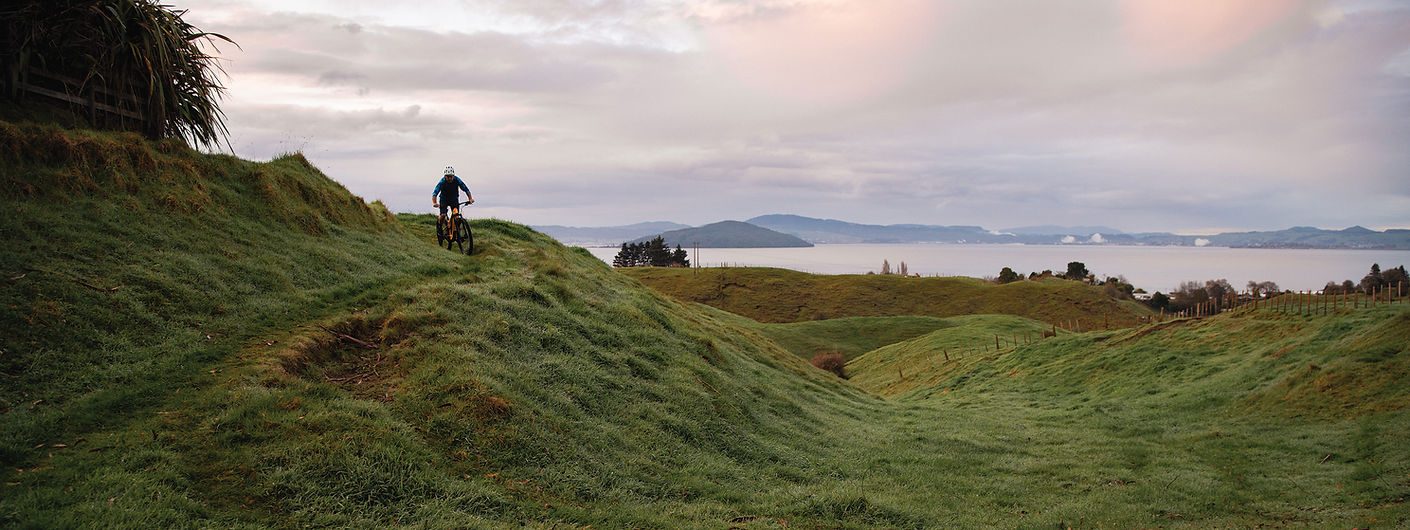
Which brings me to next part of my story - what the Fuel EX e is like to ride.
It feels like my regular Fuel EX. The motor is not engaged with the cranks when it isn’t driving, so riding the bike around with the system turned off just feels like a normal bike. In factory default settings, the Low power mode feels like a normal bike might feel to Anton Cooper. The way the power comes on is very subtle, almost imperceptible, you just feel a lot stronger than usual.
That is where the heavy breathing comes in. In Low power, I was working as hard as I normally would, or nearly as hard, just going faster. It isn’t at all like the full powered bikes I have giggled my way around the trails on. If you don’t punch the power up you still have to earn your turns.
Mid power offers more of a surge at the pedals, but is still fairly muted and gentle. Full gas is definitely a big boost, but nowhere near the rowdiness of the Rails or Levos I have ridden.
And going hard on the power will rinse the battery fairly quickly.
I started a lot of my rides with a 150m, one and a half kilometre, singletrack climb. Low power would see me use seven or eight percent of the battery charge, high power double that.
By riding nearly everywhere in Low power, I squeezed 49 kilometres and 1350m of ascent out of a charge.
On another day, using a bit more throttle here and there, I got 40ks and a little over 1000m vertical.
But for this bike and me, the sweet spot was about 35 kilometres of trail and around 800 up. At that distance and elevation gain, I could ride the entire distance on Mid power or Full power, which is at least 37% more fun, and get a really good workout at the same time.
On the example I had, with its 150mm RockShox Lyric fork and RockShox Super Deluxe Ultimate (seriously, that is what it is called) shock working at their best, it was a real pleasure on the trails. Going downhill the bike was quiet and predictable. And quiet - it will be interesting to get astride one that doesn’t share the AXS shifter and seat dropper of the review sled. I wonder if having two less cables makes the bike less clattery, but honestly the only bike I have been on that made less noise was a single speed.
One of the interesting aspects of the motor is the lack of drag. On some other e-bikes, once you hit the built-in speed limit, you go from having considerable assist to having the drag of turning the motor over. This one completely disengages, so you dont feel like you are fighting anything.
Another aspect of the lower power of this bike compared to the full-on versions, is that the rider is rewarded for maintaining a good cadence. For me, a pretty fast spin seemed to be the way to get the best out of the motor, I found myself changing gear maybe more often than usual to keep the revs up especially on flat or climbing trails.
And that right there is the real beauty of e-bikes in general, for me anyway. Trails that are a bit of a chore become a lot of fun. There is a favourite of mine in our local patch called Old Chevy. It is three kilometres of tight singletrack, with 49 metres of ascent and 78 metres of descent. It is full of short pinch climbs, and fun but very quick downhills, connected by contorted trail. Like I said, it is one of my favourites, but it always hurts. I am sure it is fun for the very fit, but now I KNOW it is fun for the electrically assisted. And on the EX e, it is fabulous. Coupled with enough torque to make the climbs fun to attack, the light and natural feeling of the bike means the downhill and traverse sections just feel like you are having the best day on a bike, ever, fitness wise. Every time.
And that brings me to the effect having this bike for a month has had on me.
As my specialist predicted, access to an e-bike has been a big help. I can go out on consecutive days, and give it what feels like a decent serve. I have ridden the bike much more than I was riding my bike before, and while the assist obviously makes that easier, the extra riding is putting kilometres in the bank and the benefits that brings.
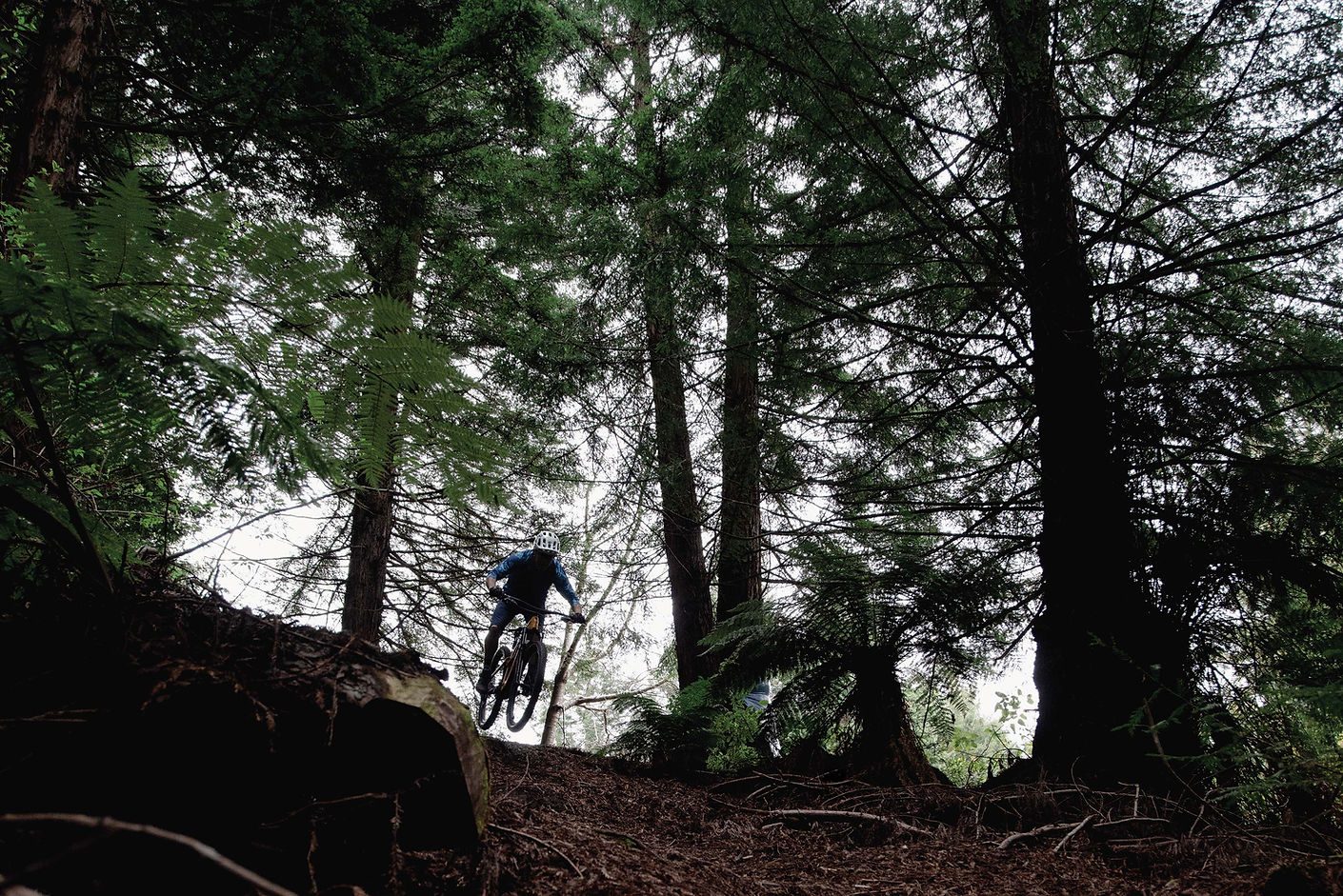
I have done a couple of rides on my other bikes during the month of the EX e, and they have been the longest and hardest since I got going again. A big ride on the roadie, in the wind and rain, which incorporated a decent chunk of forest gravel, and a week later a long mountain bike ride all over the forest - neither one made feel anything other than satisfied. I could ride again the day after both outings, and did!
So not only did riding the EX e get me out more often, it added to my ability to get out more often.
That is a big deal from my perspective. I feel like I am more or less back, if not to normal (what exactly does that look like?), at least to a stage where I am up for whatever kind of bike ride presents itself. Like I was before I got hammered.
I have figured out what it’s good for. And who it’s good for.
It isn’t the guy who overtook me the last time I took the regular bike out. He came past me on a big climb, seat about ten centimetres too low, gear about four sprockets too high, shorts maybe a size and half too small. On a big e-bike, motor hauling him skyward while he pedalled with feet akimbo, heels on the pedals. He would not like the EX e, he would feel short-changed by its comparatively low power package.
But a mountain biker, looking for a way to cram more riding into a busy schedule, or get a decent ride in when not at peak fitness, or maybe a person on the rebuild trail, I can’t recommend the bike enough.
Trek sells a range extender, which sits in the bottle cage and provides an extra 40% of range. Well, “up to 44%”, according to Trek. I will get one, when I get my own Fuel EX e.
There, I said it. When I get my own Fuel EX e. It’s that good.
Words: Gaz Sulivan
Images: Savanna Guet


